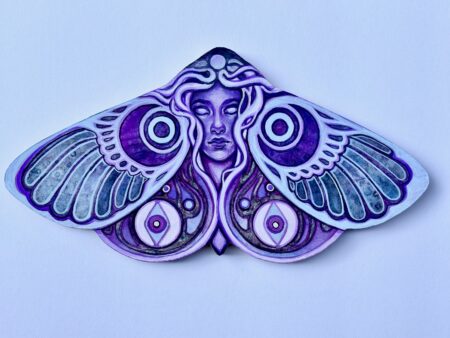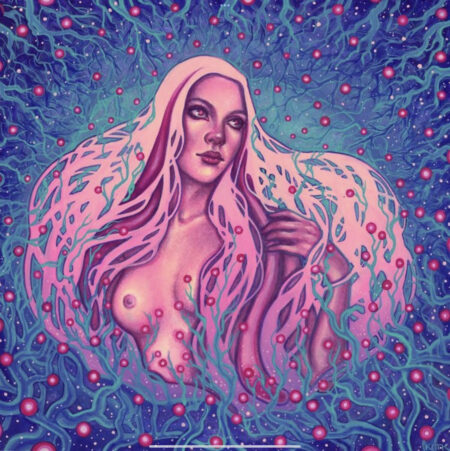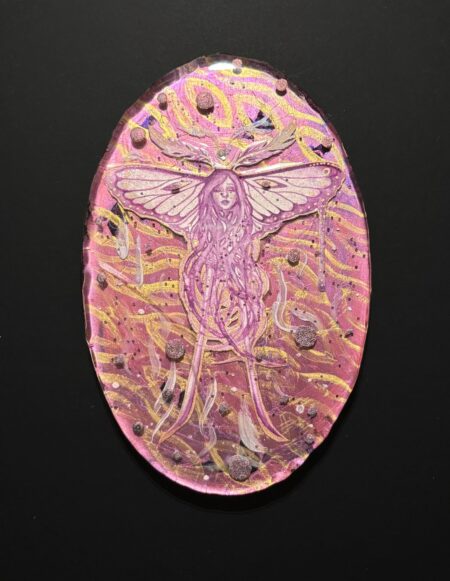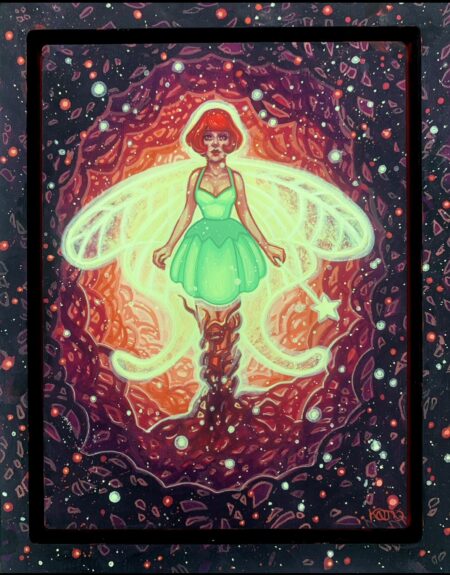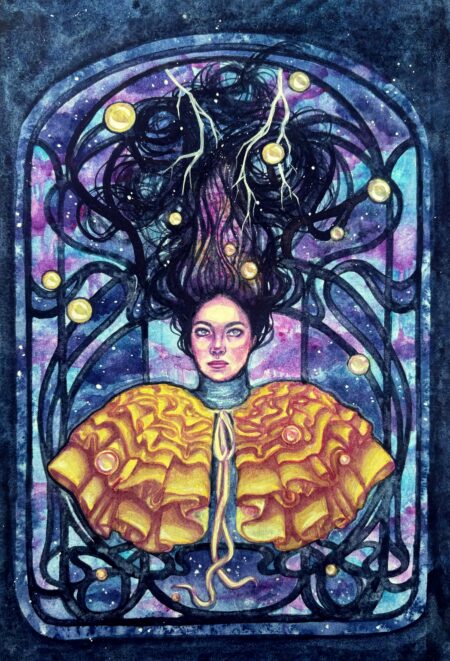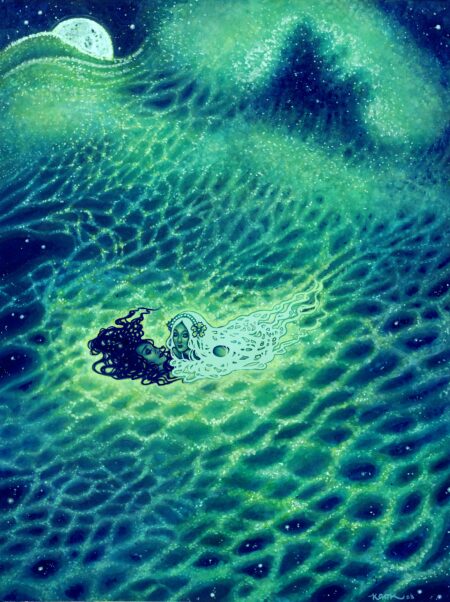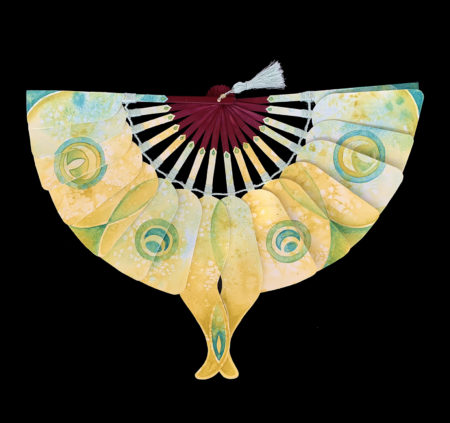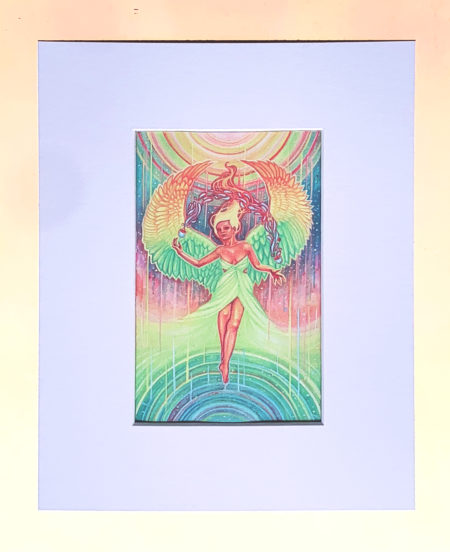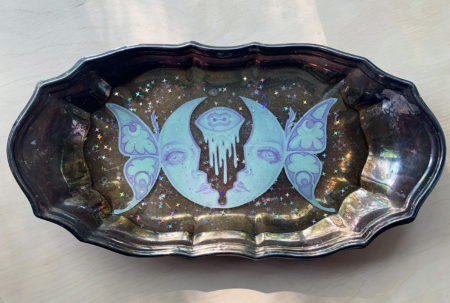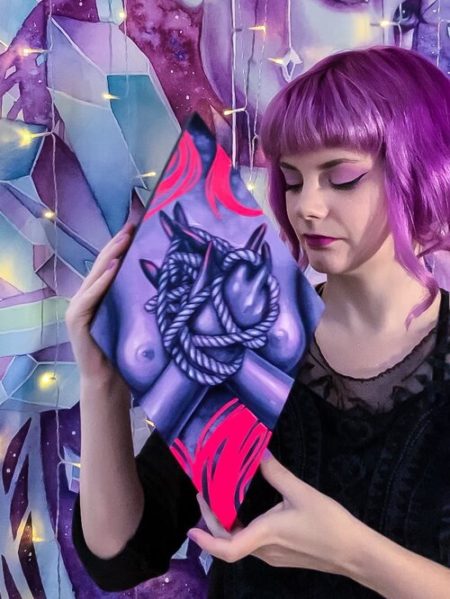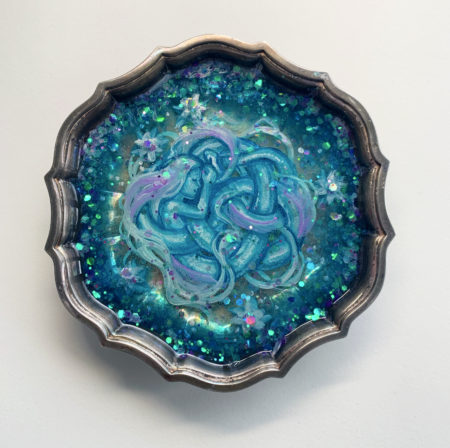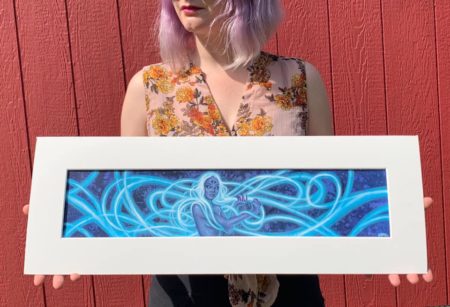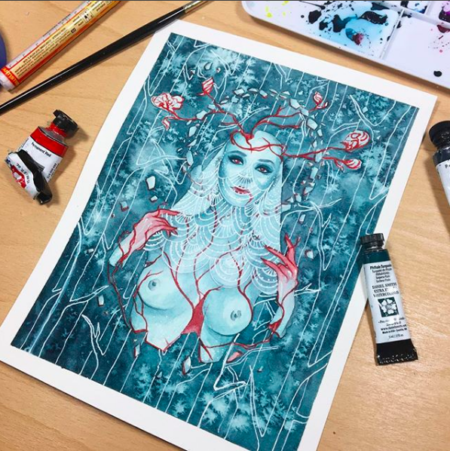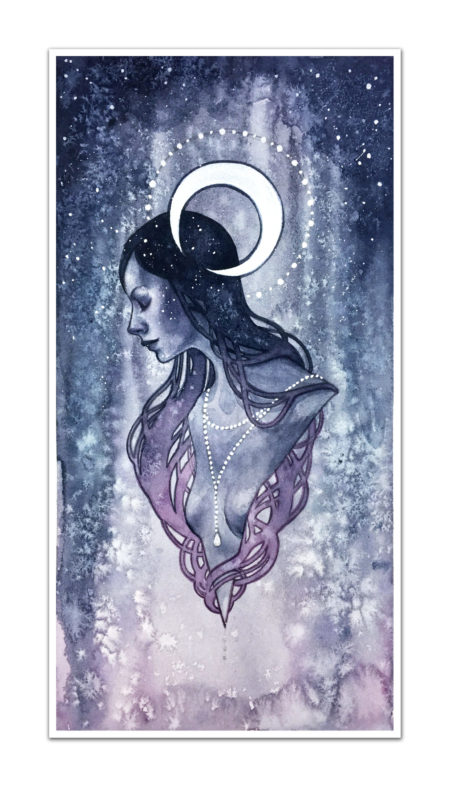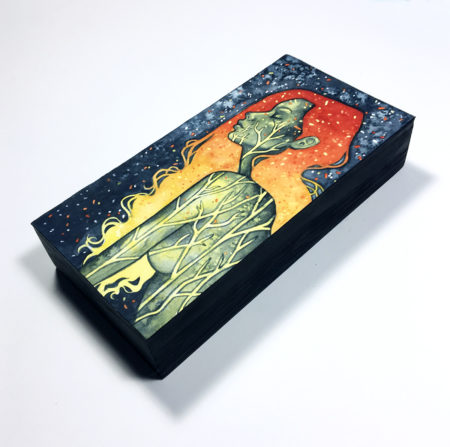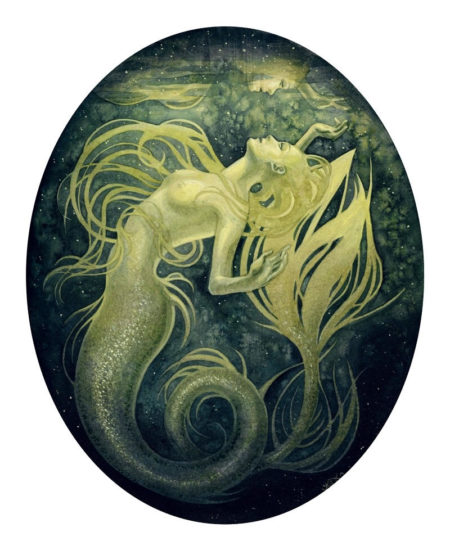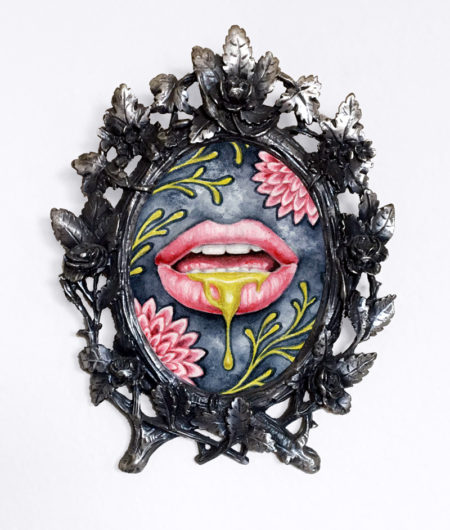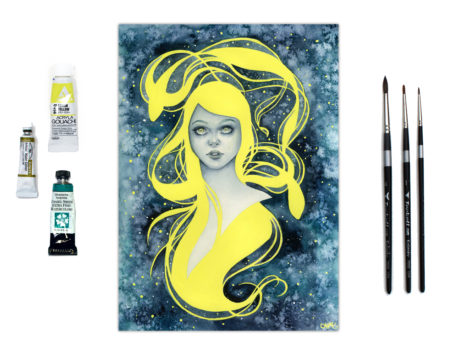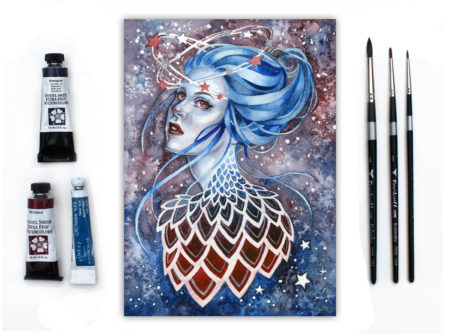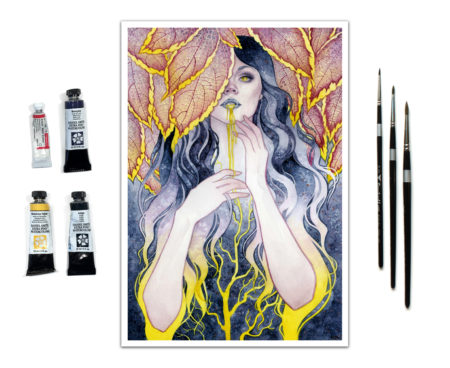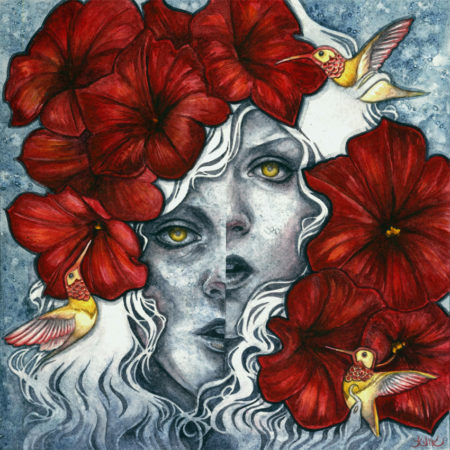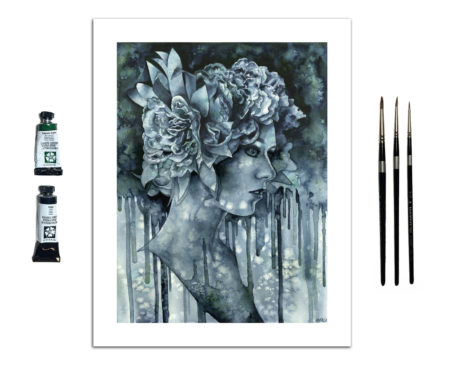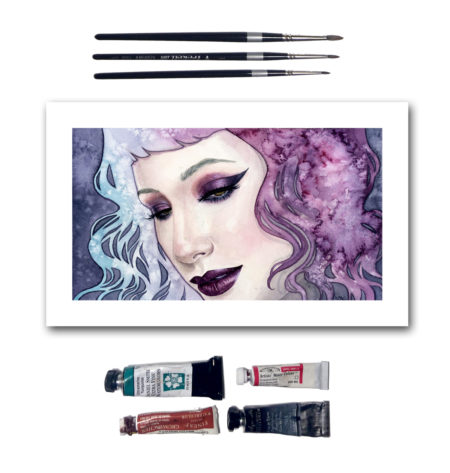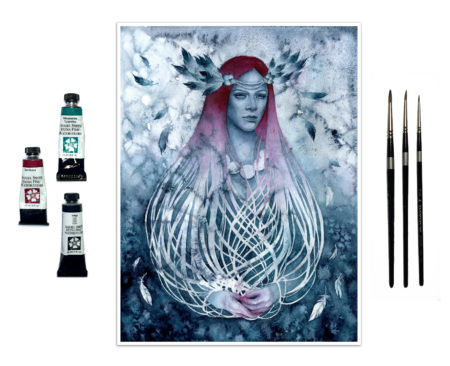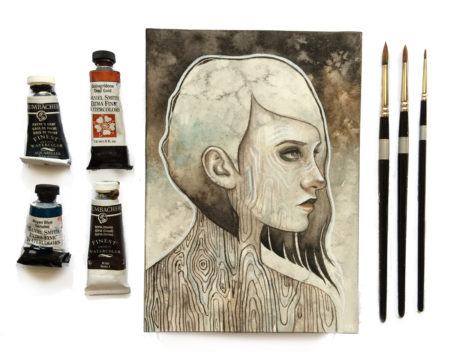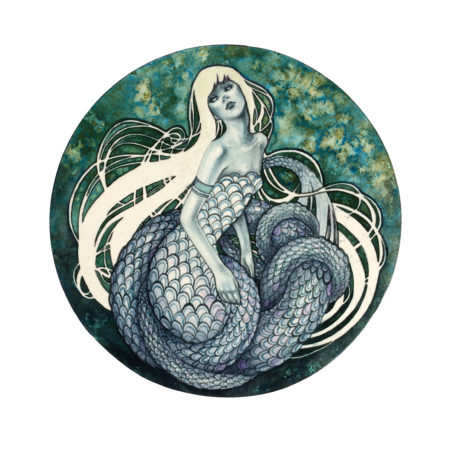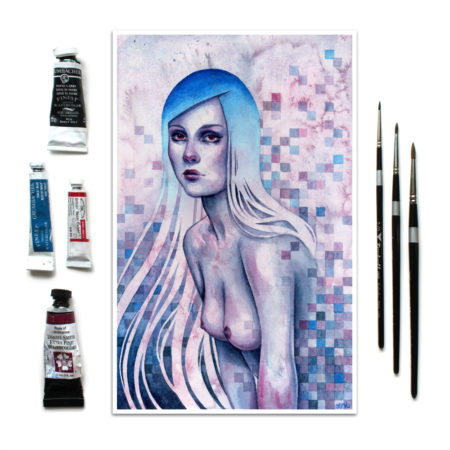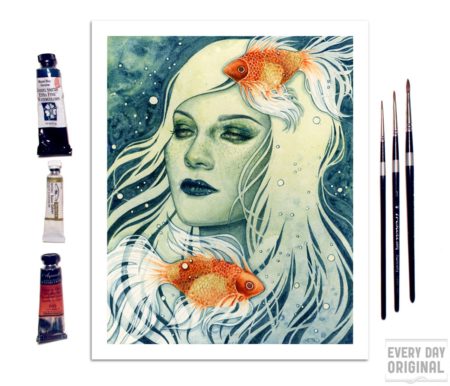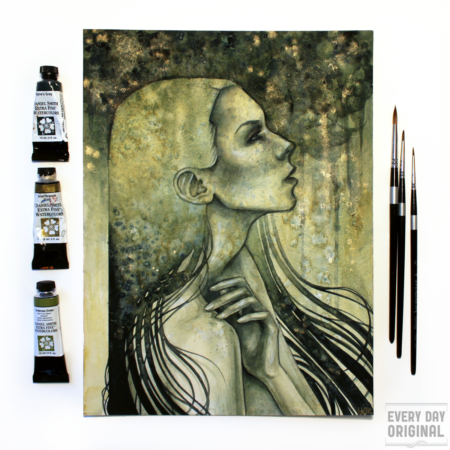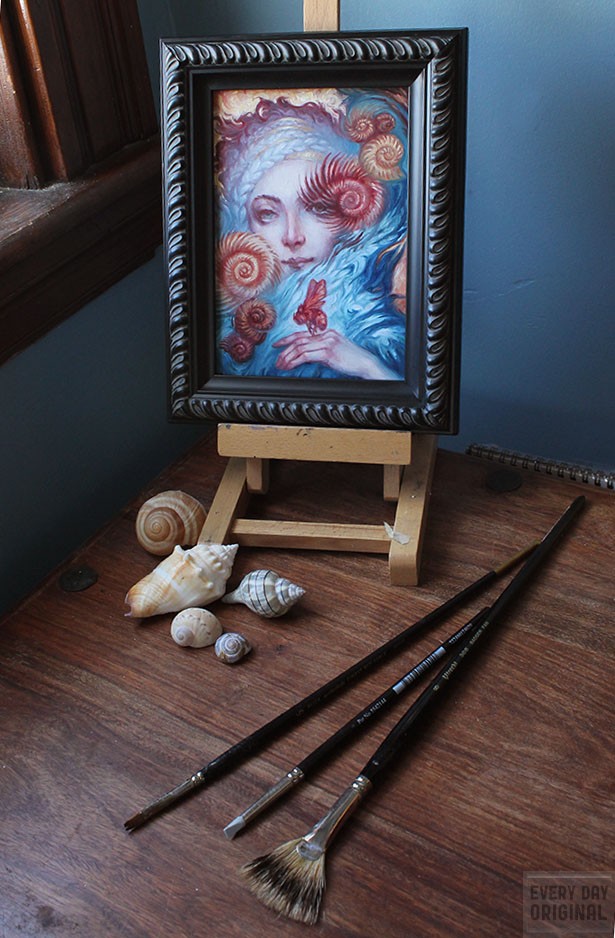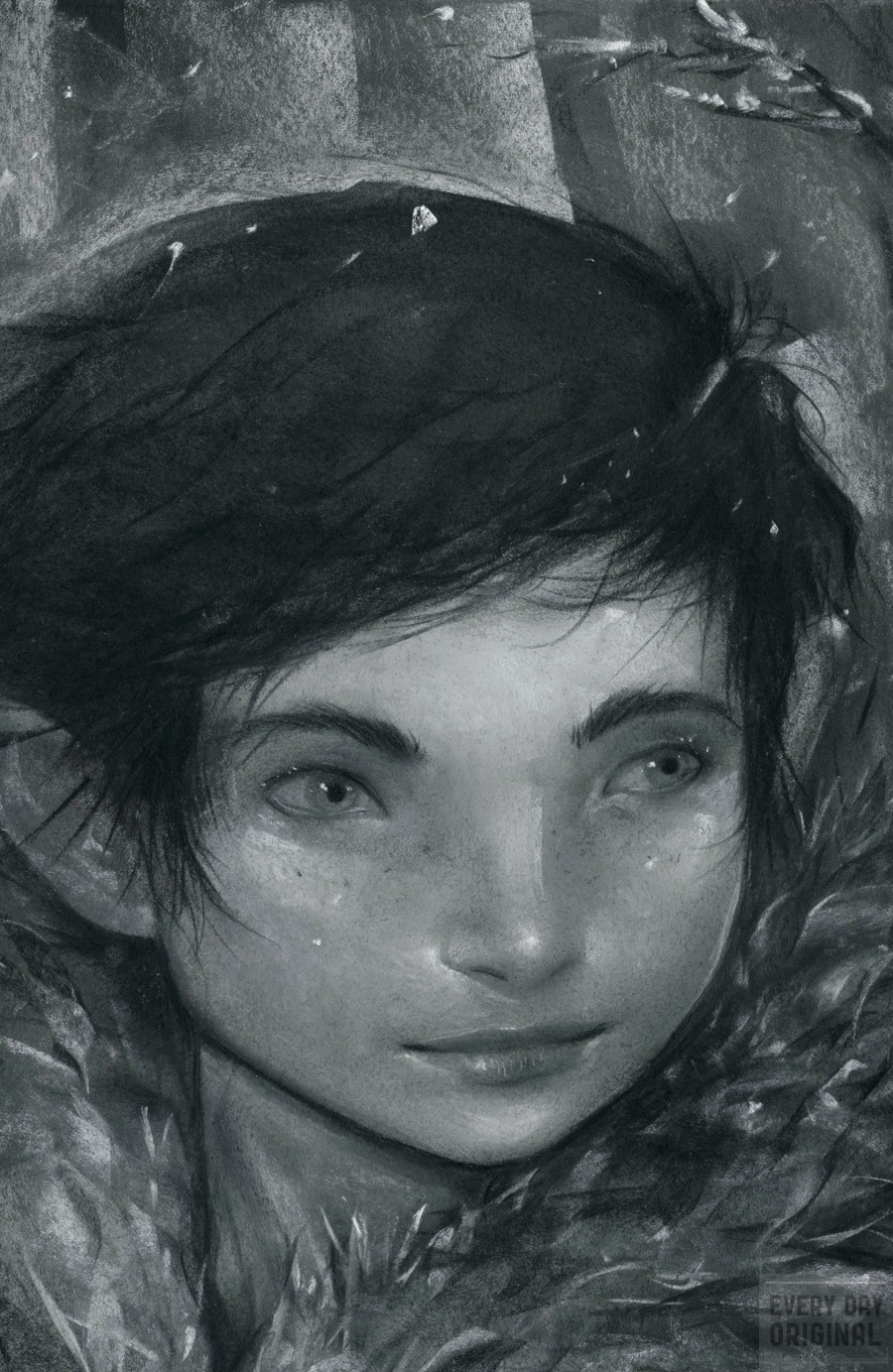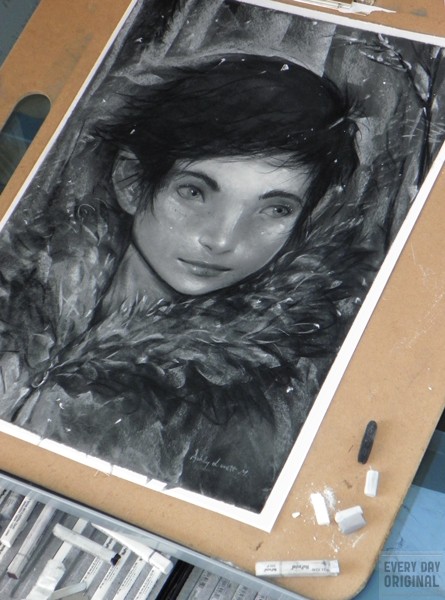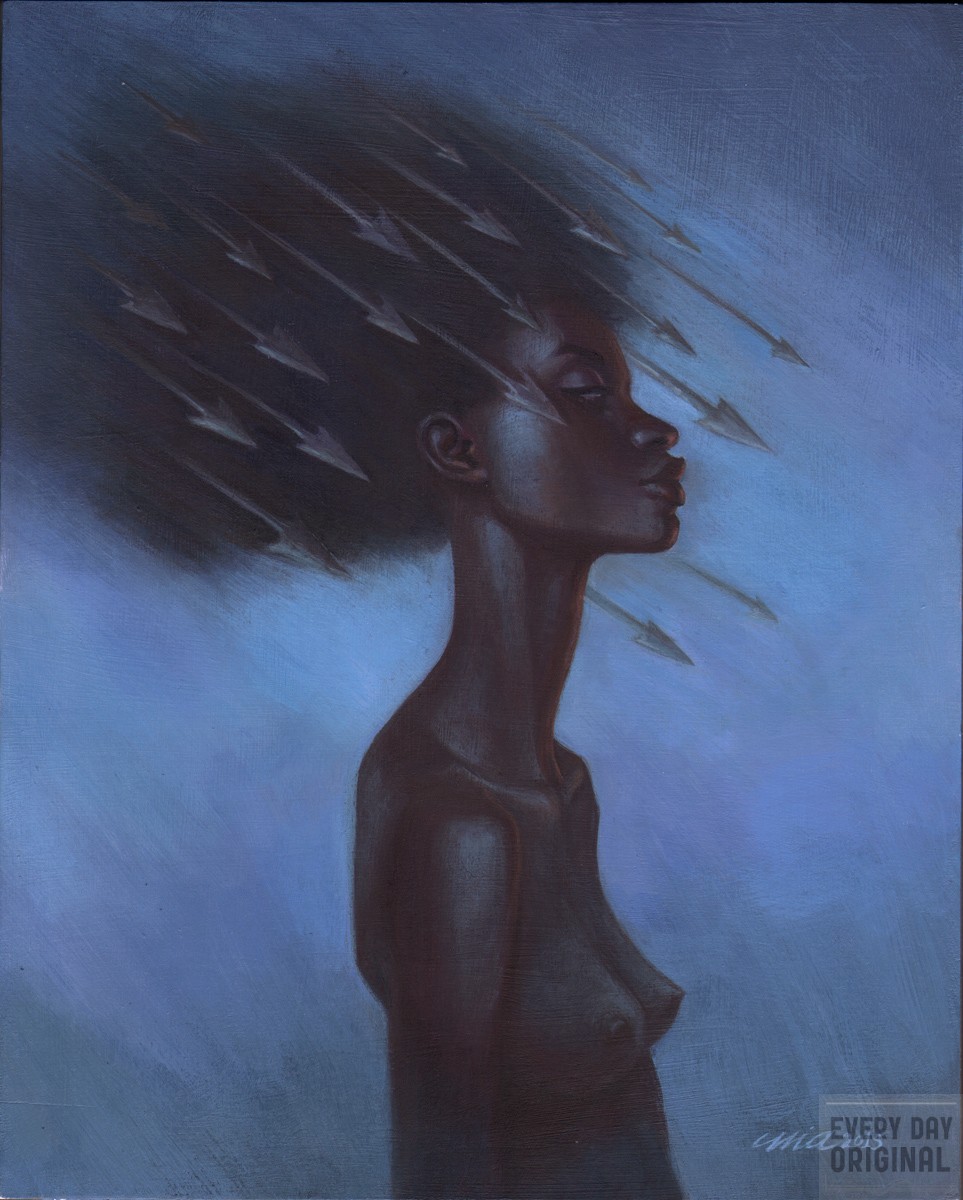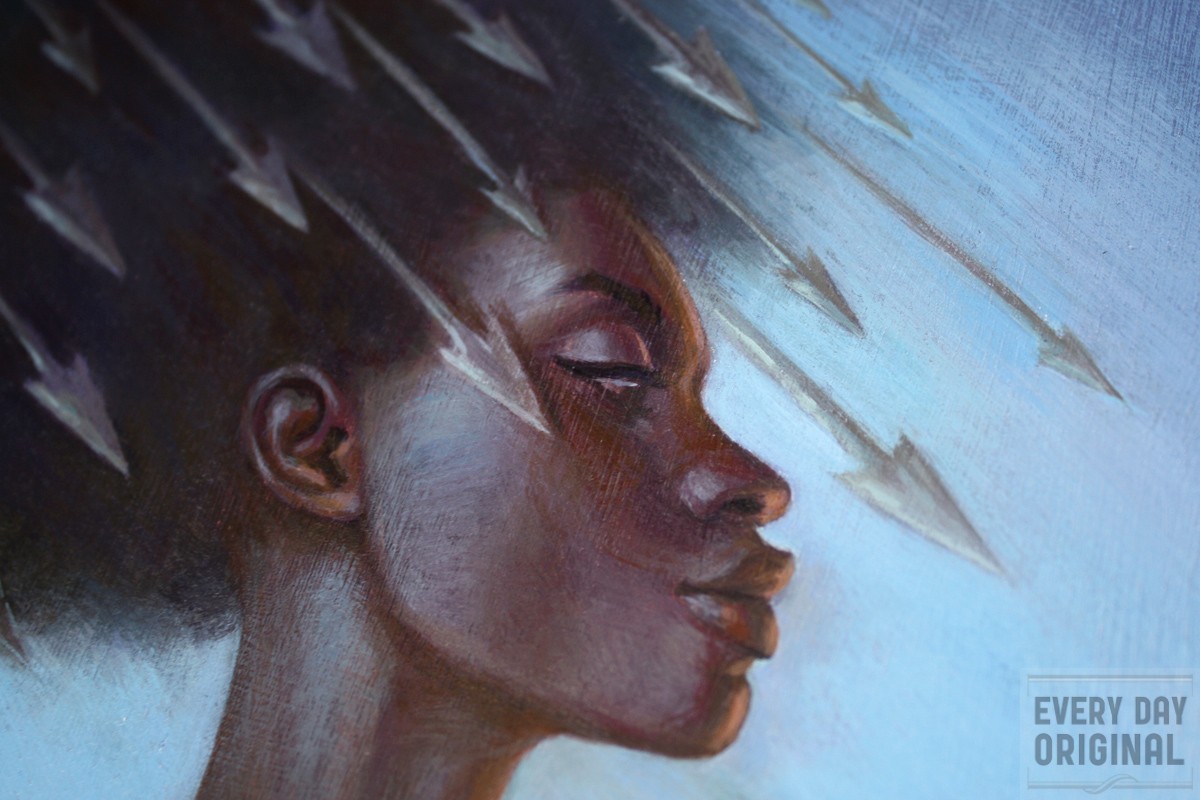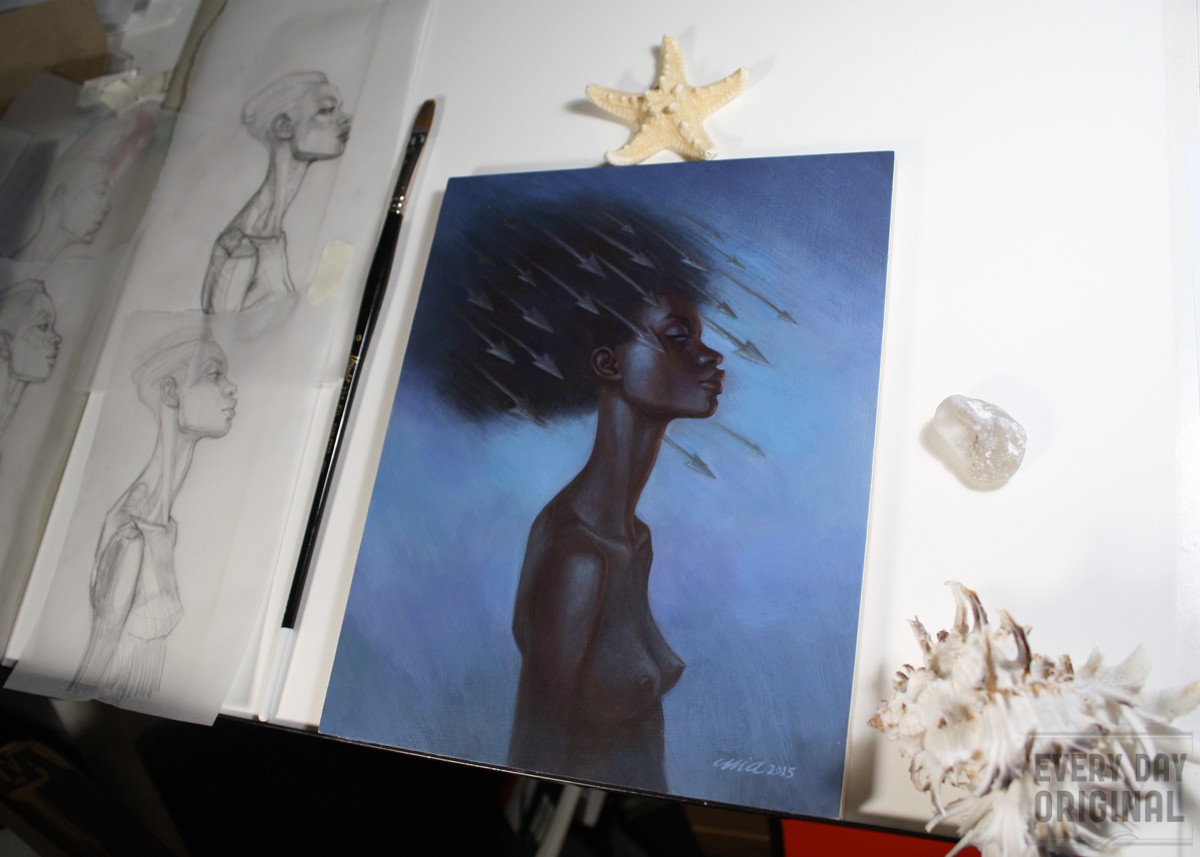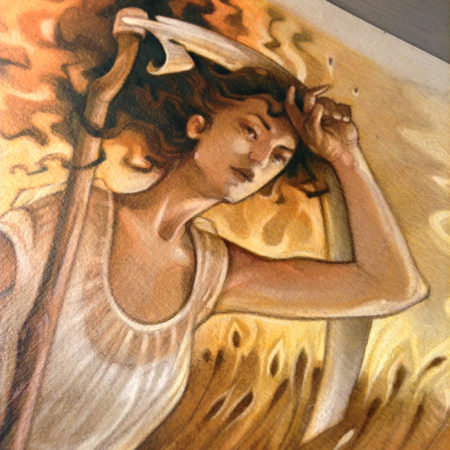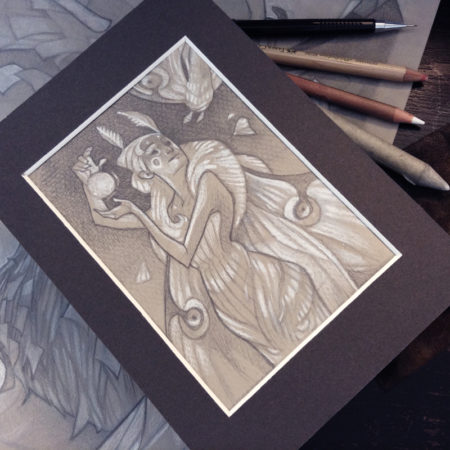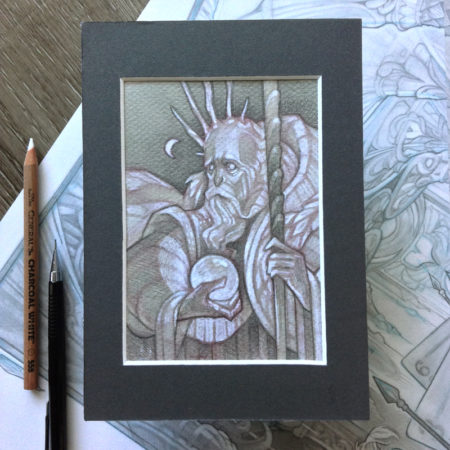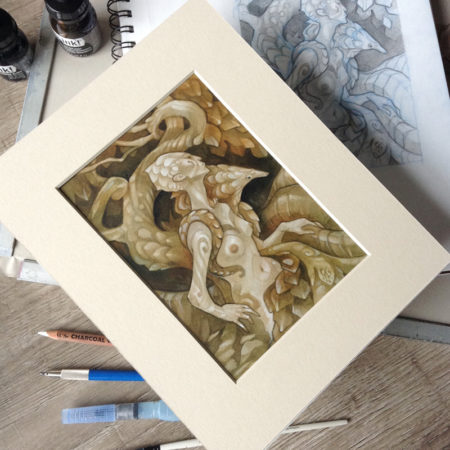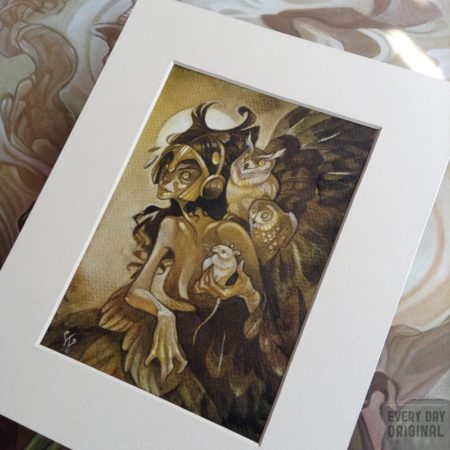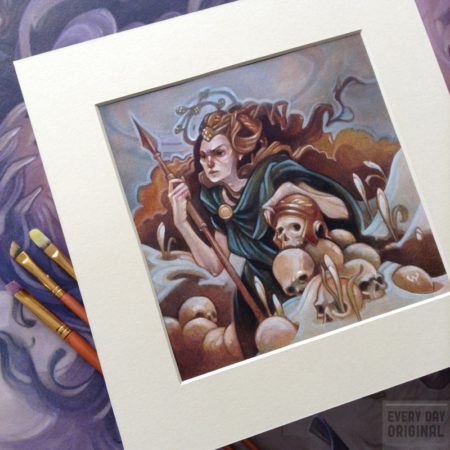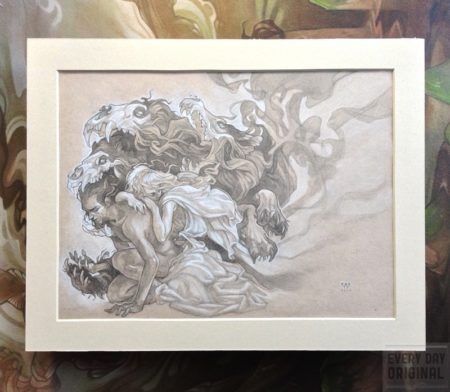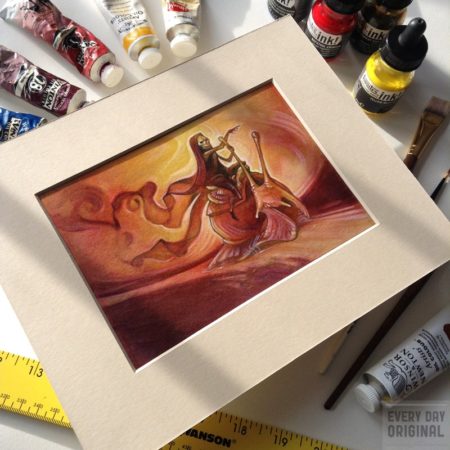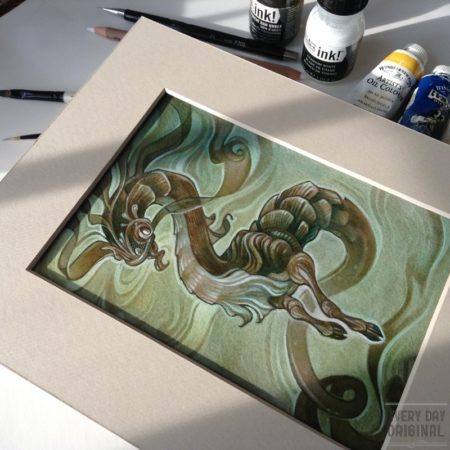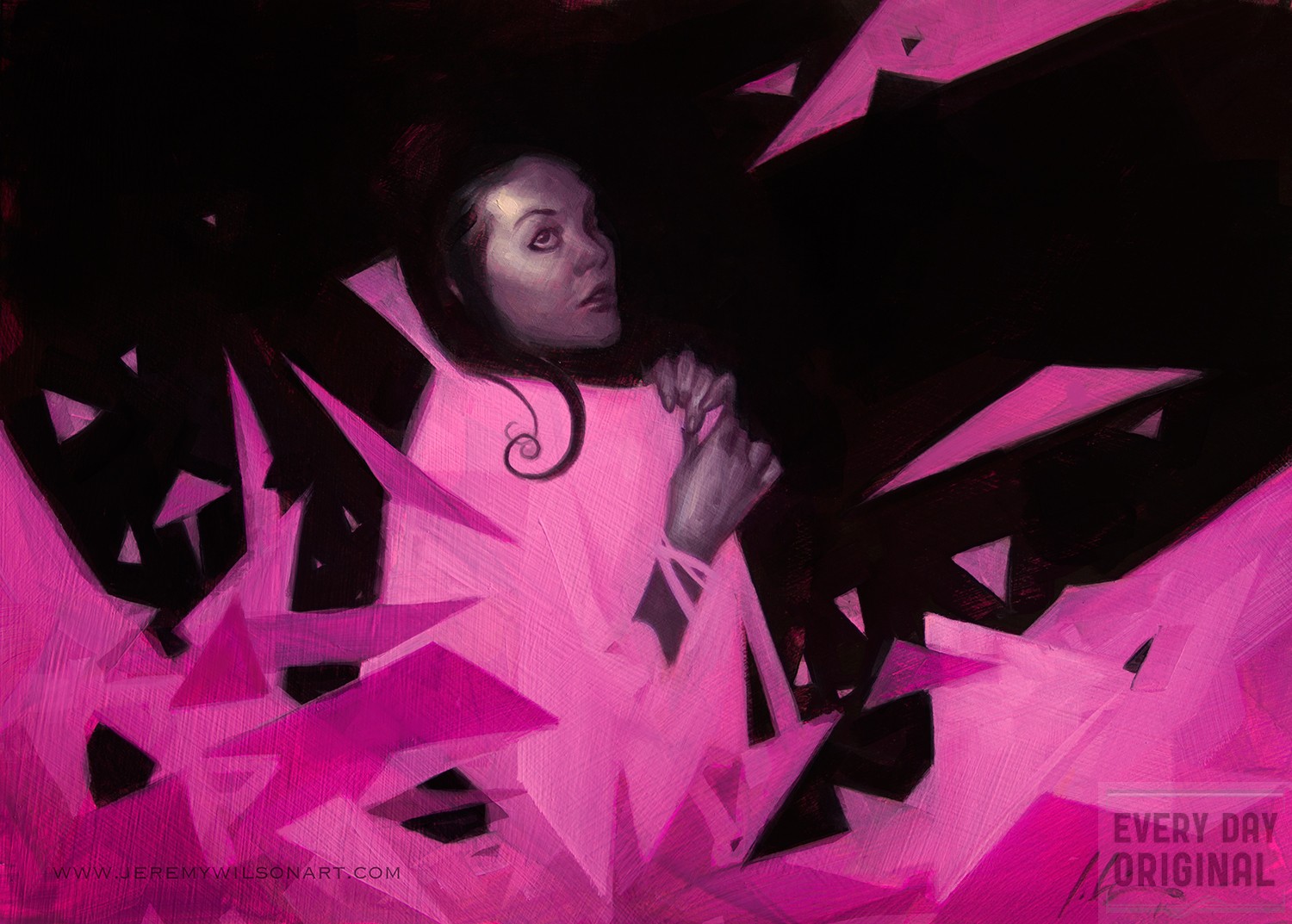Kelly McKernan is a fine artist and illustrator who creates paintings of ethereal and fantastical women. We are so excited to have her as a featured artist on Every Day Original.
Be sure to check out her website, follow on her facebook, or continue reading our interview where we discuss the business of art, education beyond art school, and navigating gallery art and illustration.

1. Could you tell us quick information about your background and how you came to be an artist?
I was one of those kids that always wanted to be an artist. Thankfully, my parents were really supportive of my creative tendencies and let me go to summer art camps, experiment with paints, markers, and even chalk pastels (which, if you have carpet at home, I don’t recommend giving to a child unsupervised).
Things got going in a more serious direction in high school. I had an excellent art teacher that really set a strong foundation and she ended up inspiring me to pursue a degree in art education to become an art teacher myself. I went to a college in my same state that offered the program, but after a year, I decided to switch to a studio art major. I enjoyed painting too much and felt that I could somehow figure out how to make a career out of it instead.
I graduated in 2009 and I spent the following three years balancing part-time jobs with my emerging gallery career. In mid-2012, I was able to go full time after moving from Atlanta, Georgia to Nashville, Tennessee.
2. You also took a course at SmArt School, but you already had a huge following online and a successful gallery career. Why go back to school, and why online? We know “learning is its own reward,” but there is always another piece. What let you know it was time to get back in the student chair?
So, here’s the thing: while in my final year of art school, it became apparent that illustration was an actual, viable career option. It sounds silly, but I really had no clue. I was in a very insular, traditional program. I only became aware of contemporary artists with an “illustrative” style, such as James Jean, by doing my own research online. I picked up his Fables Covers book that year, brought it to my favorite professor, and he scoffed at the style. I came to find out that many of those I looked up to treated the word “illustration” or even “illustrative” to describe a style, like something dirty and beneath whatever higher form of expression they were there to teach (I sound so bitter, don’t I?). At the time, I had already veered off into my own developing style and pretty much spent my final year creating work for gallery commitments rather than assignments. I was really stubborn and wanted to prove that I could make a living with my developing “illustrative” style at the time.
When I took my career full-time in 2012, I felt that I had developed a formula for my work, had a recognizable style, and that my work was gaining traction in the gallery circuit. All the while, though, I had this nagging feeling that I needed to expand into illustration, but I had absolutely no idea how to accomplish that. Illustration has a language of its own, and it felt completely foreign to me. This was really frustrating since I’m typically a resourceful person and feel capable of self-teaching. But I just couldn’t grasp the concept to bringing my style over to the side of illustration.
For a while, I had played with the idea of returning to school for an MFA in Illustration. A couple of professors at SCAD Atlanta had encouraged me to do so, but I just couldn’t get past the amount of debt I’d be committing to. At some point, SmArt School popped up in my Facebook feed and it seemed like the perfect answer. I actually had just the right amount of money for the full mentorship leftover from an educational trust fund set up by my grandparents. So, I signed up for the Fall 2013 semester.
I chose Dan Dos Santos for a few reasons – his style was very different from mine, he works traditionally, I was interested in book covers, and his subject matter isn’t far off from what I was interested in exploring. What I really needed, most of all, was to be walked through how to take my current style and gallery art-tendencies and appropriately apply it to the realm of sci-fi and fantasy illustration.
As far as returning to the “student chair,” it was all about having an open mind. For three years, I had been making my personal goals as an artist and, as I said, I had found a formula. That’s relieving, but also a little unnerving – is having a formula really a good thing? My work was getting stagnant and I stopped really challenging myself. And when I did want to challenge myself, I didn’t know how to. So, stepping back into the place of a student had me put aside any pride from success that I felt as a gallery artist. By doing that, I learned more in a few months than I felt I had in years spent in college. That one SmArt school class really changed everything for me and I feel that even my gallery work is so much better for it.
 3. You are making a transition now from gallery work to illustration. Is it correct to call it a transition or are you simply expanding? Tell us why the move and/or expansion?
3. You are making a transition now from gallery work to illustration. Is it correct to call it a transition or are you simply expanding? Tell us why the move and/or expansion?
I’m not sure that I’m transitioning entirely, but I’m definitely expanding. I think I’m in a unique position right now, actually. I enjoy working with galleries. I’m participating in a lot of fun themed shows and have had a couple of solo exhibitions, with a couple more around the corner. As a gallery artist, your goal is a solo show with a prestigious gallery and representation. However, you’re also sharing a large commission (usually 50%), and sometimes your work might not sell at all. You can be a total slave to the gallery system if you really want to. A lot of fine artists are okay with that. They don’t know how to market their work, or just don’t want to, and they let the gallery earn their commission for doing that part. However, I really enjoy marketing my work. Social media is a powerful tool when you learn to use it properly.
So, my unique position? I could probably quit being a gallery artist and sell my original paintings myself and make more money than I do by working with galleries. Private commissions usually pay a lot more as well. This is almost entirely due to social media. I have enough of a following right now that I’m able to directly reach a mass of people that enjoy my work, and a few in there are keen on supporting it financially. This is actually my long term plan regarding gallery work. I’m turning down more shows and only accepting the ones I’m really interested in being a part of. There are a few galleries I truly love working with, and I’m going to maintain those relationships as long as they’ll have me, but I’m otherwise going to slow down.
In the meantime, I’m going to focus more on illustration work. I’m really an illustration baby… I haven’t yet had a real illustration job with an art director. I’ve only just gotten to know a bit of the sci-fi and fantasy illustration community and attended SFAL 4 (my first convention!).
4. What do you see for the future of your work as an illustrator and fine artist? In your wildest dream, what big project are you pursuing?
Ideally, I want to see it split up like this: 25% gallery work/personal work, 25% private commissions, and 50% illustration. I think that the variety will keep me on my toes and
As far as a dream project, that’s so hard to say! I think I’d be pretty thrilled to get to do illustrations for my favorite fairy tales.
5. Let’s talk about family, you have one, it is growing! You have said that motherhood changes how you work and manage your time/career. I can relate, now with 2 small ones at home efficiency is the word of every. single. day. That said, has motherhood affected the content or narratives of your illustrations and paintings? If you’ve noticed changes would you attribute it to motherhood, or just a maturing and evolution of your work?
Oh my gosh, efficiency is definitely key! As far as it effecting content or narrative, I don’t really think so. I’m still interested in the same things, but there have been definite changes otherwise! I would say it comes directly from my time management, now that I have less time than ever to create. I’m taking more time on prepping a piece, gathering reference, doing studies, and making sure I’m going into a new piece at least 75% sure of how it’ll look when it’s completed. Previously, I was pretty lazy about this and realized that my work suffered because that. Since every minute I have available to work really has to count, I don’t want it wasted on a piece that I’m not happy with, or have at least learned from.
So, consequently, I feel like my work has matured a lot in the last year since becoming a mother and learning to work around my daughter’s ever-changing schedule and demands.
6. Is there more to you than work and family? Are you a political science hobbyist, backyard rocket engineer, undiscovered world-reknowned pastry chef?
Ha! Well, my napping skills rival that of my daughter’s. Beyond that, I really enjoy playing table top games with my husband (and family and friends whenever we find the time). Some of my favorites are Munchkin, Carcassonne, Ticket to Ride, and I’m really enjoying a couple new ones we just picked up, which are Coup and Five Tribes. Lately, I’ve been trying to allow myself to do something that’s entirely for me, since as a work-from-home freelancer and mom, it’s easy to feel guilty if I’m not using ALL of my free time to work. So, I’ve picked up a few games from Steam and I just finished playing Transistor, which was GORGEOUS. I’m definitely planning some fan art. I’ve got Child of Light to tackle next.
7. Back to art: Could you walk us the through the process of a piece? What steps do you take visually and what steps do you take conceptually/narratively?
It totally depends on the project – whether it’s for a themed gallery show, a personal piece, or a privately commissioned painting.
If the piece is conceptually or narratively driven, I begin with a lot of notes and a breakdown of symbolism and visual cues to create. From there, I work out a few small thumbnails to work out a basic composition with the subject matter in mind. If I need very specific reference, I’ll hire a model, or I’ll search for similar stock photos (deviantart.com is an excellent resource for this) and “frankenstein” what I need.
If the piece is more personal, and I don’t have a clear idea to begin with, it usually starts with the reference. I hire a model for my fine art work once or twice a year and take several hundred photos of various poses. I’ll return to those folders to find something that strikes my interest and that usually inspires the rest of the piece. The way the model’s arms are folded or the angle of her neck might tell me the beginnings of a story, and I move from there, building small, rough sketches to work out ideas, which I then narrow down into a composition.
Both processes then meet at the same place – I print out my reference images, sketch over the final surface, and then pick up whatever media I’m planning to do the piece in.
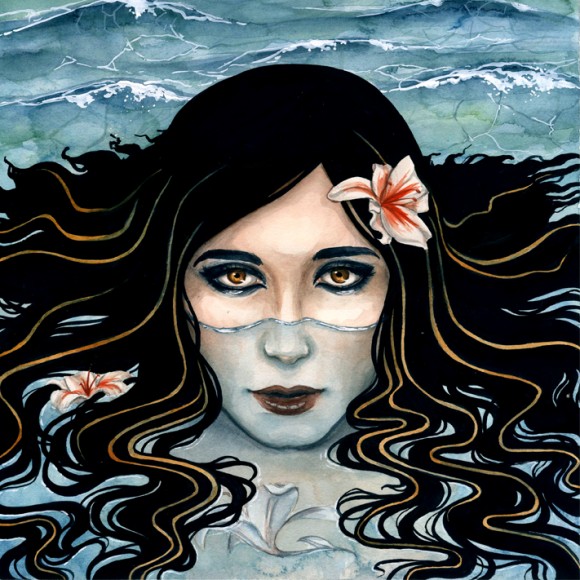 8. Rather than ask how you price your work, we would love to know how you budget your money and time. Do you have a goal salary and work to make enough work to fill that number? How do you approach the business of being an artist?
8. Rather than ask how you price your work, we would love to know how you budget your money and time. Do you have a goal salary and work to make enough work to fill that number? How do you approach the business of being an artist?
I am terrible with money, so I leave the money management to my husband. Because he’s also a freelancer, how we set our financial goals every month are pretty much the same. We know the minimum that we need to meet to pay the mortgage and the bills, buy groceries, etc. I make about 2/5ths of our combined income, so I have a minimum goal to make every month. Most months, I reach that goal without having to stress too much about it. The majority of my income is through print sales in my online shop. I also know when to expect payment from the sale of a painting through a gallery or EDO, so I factor that in if sales are slow in my shop.
I also keep a close eye on my income and expenses with bookkeeping software from Godaddy, which I pay $10 a month for. I make sure all of my business-related expenses are done through Paypal, but I also am paid through Stripe (via Storenvy, which my shop is through), so I have both accounts kept up with through the software and income and expenses are both automatically kept track of. Any expenses are also made through Paypal, and any in-person purchases are made with the Paypal debit card to keep things simple. If I’m paid via a check for the sale of a piece through a gallery, I just make sure to enter that manually and save the stub in a folder of physical receipts. All of this makes tax time a million times easier.
As far as the business of being an artist, I feel like that comes very naturally to me. Ever since I was a kid, I was trying to find ways to monetize my interests and skills. I sold drawings on index cards and handmade bookmarks at our summer garage sales, made jewelry in middle school and sold them on the bus, and I even bought packs of candy at Costco to sell to my friends at school for a profit, haha. So, finding ways to do what I love for a living is a really fun challenge and I’m always looking for ways to do this better in order to maintain my dream career.
9. Where and how do you sell your work? How did this come together for you? Is it together?
The majority of my original artwork is created for and sold in various galleries. If it hasn’t sold through them by a certain amount of time, it’s returned to me and I list it in my online shop. I sell prints of most of my work in my online shop too, though as a general rule, I don’t make a print of an original piece until it has sold.
I began selling my work online in early 2008 when I started getting print requests of new work I was creating while in college. It felt odd to be doing that while still in school, but I found that the majority of people that enjoyed what I was creating didn’t have the expendable income for original pieces, so prints were, and still are, a great alternative. Doing this required me to work out some marketing skills and find ways to advertise that I had prints available. Things started out pretty slow, but once I had a hit piece in 2009 that garnered a lot of attention, I figured out that I could offer limited edition prints and raise the prices. People really seem to react to a print being limited, so those sell pretty well.
Things have picked up a lot in the last year and I’m fulfilling print orders a few times a week. I try to be really nice to my mail lady, since she has to come pick up a bunch of shipping tubes from my front porch often.
I’m always trying to learn and improve upon how I handle my shop. One of the hardest things to gauge is interest in a piece becoming a limited edition print and whether it’ll actually sell, because once I commit to offering it, that number of prints needs to sell. Working out shipping issues is tough too, but after a bit of trial and error, I have that pretty streamlined. Pretty soon, I’m doing a complete overhaul of my online shop and taking print production entirely into my own hands in order to have a greater profit margin since it’s a big part of my income.
10. In your portfolio you have a lot of original art, and you also have work that references well known myths, fairytales, as well as IP-based art (some call it “fan art”). Why work with other people’s ideas? Do you think that diminishes the value of the work? Why or why not?
That’s a really good question. Fan art and my original art feel very different to me, but all fan art (and art based on existing stories) have an origin before they go into the filter of how I want to visually interpret my experiences with them. Some of the story and character derived work that I’ve done has happened because I’m really passionate about it and want to get it out of my system. It’s fun and, frankly, sometimes easier and less pressure and therefore a break from some of my heavier, conceptual fine art work. As far as whether it diminishes the value of the work, I’m not really sure. I always feel a little odd selling any of that work, but when I know it’s going to someone that loves the character or story the piece is based on, I feel okay about it, because then it’s a shared experience, and I know they wouldn’t spend money on my interpretation unless they appreciated it too.
Most of the fan art paintings I’ve done have been for themed gallery shows with one of my favorite galleries, Gallery 1988 in Los Angeles. They’re known as the first pop culture themed art gallery, and it’s been a dream working with them and getting some fantastic opportunities (and excuses!) to create work for their shows.
11. You mentioned having synesthesia and being legally blind. If you do indeed paint with treble and bass, how can you see what you sound like? Kidding aside, tell us more about this and how you move past it to create your work.
Ha! I’ve never thought of them that way! Well, being legally blind is definitely a hindrance because I have to wear RGP contact lenses (a slightly more comfortable version of hard lenses), and my vision is 20/30 at best, even while wearing them. My eyes dry out very quickly and my vision is often very blurry by the end of the day from wearing these contacts, so working at night is difficult.
As far as the synesthesia, the strongest form I have of it is music – color, and it’s lead me to wonder whether what I’m listening to while painting or constructing a piece influences my color palette at all. I’m really unsure, because I’ve learned to tune it out for the most part, but I do believe that it gave me a strong sense of color use growing up and definitely influenced my direction as an artist.
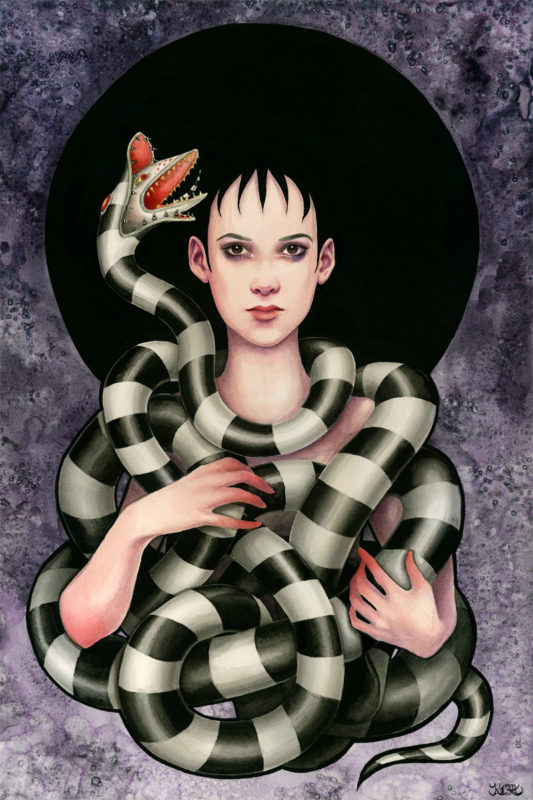 12. Your work focuses heavily on the female figure, often inside a narrow set of archetypes (visually and narratively). Is this a conscious decision to represent this specific type of woman, or do you just naturally favor this imagery in your paintings/illustrations? Is there a narrative you have about how you portray women?
12. Your work focuses heavily on the female figure, often inside a narrow set of archetypes (visually and narratively). Is this a conscious decision to represent this specific type of woman, or do you just naturally favor this imagery in your paintings/illustrations? Is there a narrative you have about how you portray women?
It’s never been a very conscious decision until recent years as I learned more about myself as a person. In my earlier years of developing my style, especially between 2009-2011, every piece felt like an exploration of my character flaws. I was heavily idealistic and learning from experience the dangers and disappointments that result from that. I was aware that every piece then was a bit of a self-portrait. From 2011-2013, I began to feel more confident, grounded, and steady. My idealistic nature had been purged. That began to reflect itself in my work, I think. I tried to explore that with my solo show work in 2013, titled “Cognitive Dissonance.” Since then, as my interests are favoring illustration, my personal work is less about discovering and reflecting upon my own nature and more about the experienced female, maybe. I’m not entirely sure. A lot of these things I don’t really understand until some time has passed. Unfortunately, I haven’t had a whole lot of opportunities to explore that with my personal work lately. However, I still default to my preference for painting women because that’s who I am, and what I understand. I hope that makes sense – it’s not something I’ve ever been able to put into words succinctly.
13. As an artist who has a foundation with traditional materials, and creates mostly traditional original pieces–what is your relationship to digital artwork? Is there a pressure to learn those tools, or is it not on your radar as an artist working in galleries?
For a while, there was definitely some pressure to be a functioning digital artist. I gave it a good shot in early 2013, but I just became overly frustrated that I couldn’t execute the same movements on a computer screen as I could on paper. I know it’s just another medium, but the barrier of the screen has been really hard to reconcile for me. So, now it’s just a tool for touching up scanned work, working with my reference photos, and occasionally working out a color palette.
14. If there was one message you wanted your audience/the viewer to get when they see and experience your work what would it be?
Hmm. That’s not something I think too hard about, because I don’t want to limit the viewer’s interpretation of my work, and I don’t want to tell them how they should feel when they see it. I only like to give a few clues via symbolism and the titles of my work (which I spend a lot of time carefully choosing). This has been really satisfying when I’ve receive really personal and heartfelt emails from people that tell me that a piece of mine affected them strongly in one way or another. One that really stands out is a response to a piece of mine called “Entropy” that someone felt really touched by because she was in remission from cancer, and her interpretation of the piece was comforting and personal to her. That’s really special to me, the relationship a viewer can have to something I create, when my own intentions and interpretation of the work totally doesn’t matter in the end. I was there for the journey, but once it’s complete, it’s out of my hands.
15. What are you most excited for, for the rest of 2015? What lessons have you learned from the first half of the year and what new practices are you taking on?
This has been an absolutely incredible year thus far! The first half has been all about learning to manage my time better and expanding my interest in illustration into making it an actual, feasible goal. The rest of the year is SO exciting, and I actually can’t share some of the best of it, but a few hints: a mini solo show, a crowdfunding campaign for IMC 2016, and creating official artwork for my favorite movie series of all time. (I’ve probably said too much, actually. Shh.)
ORIGINALS FROM KELLY
[fbcomments num=”50″ countmsg=”wonderful comments!”]


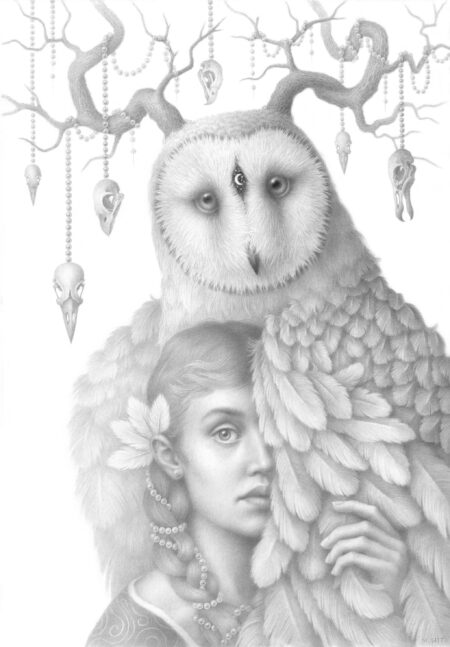
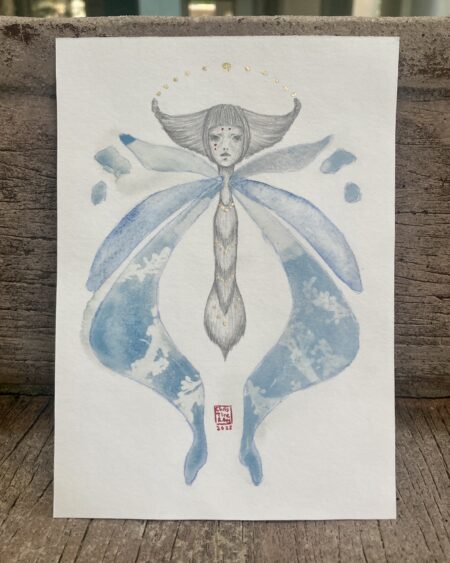
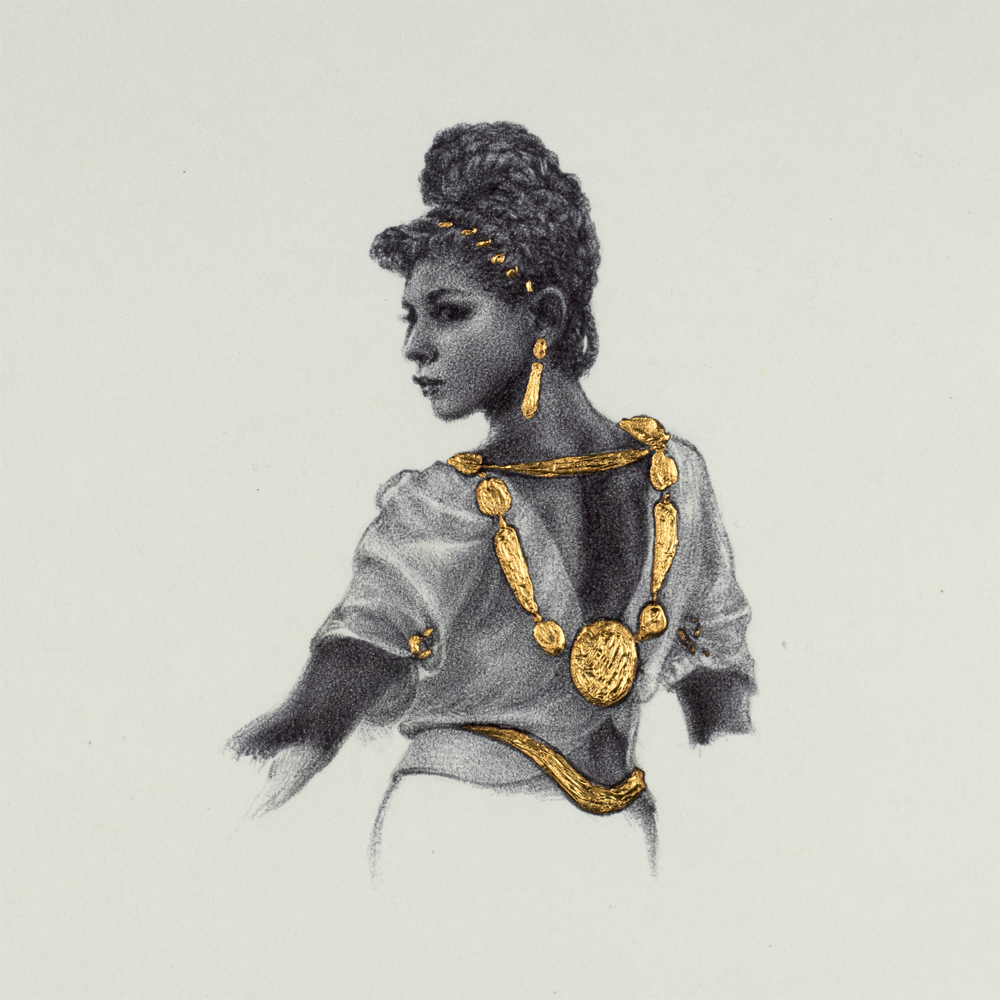
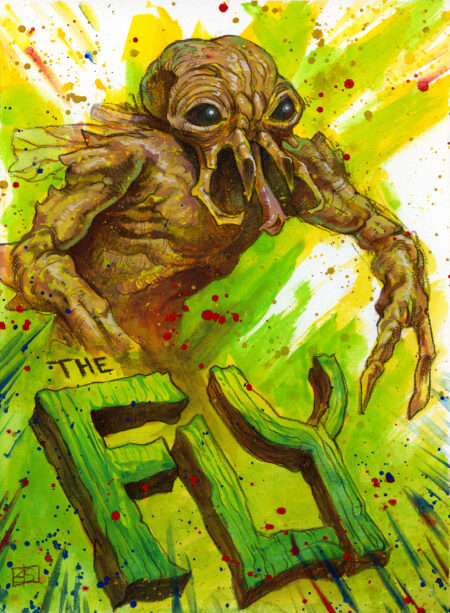
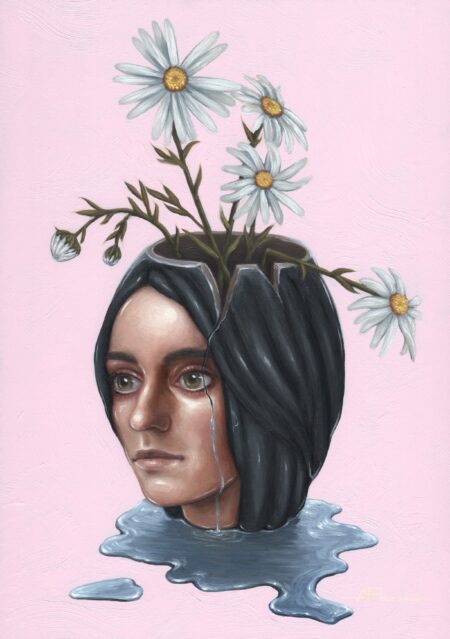

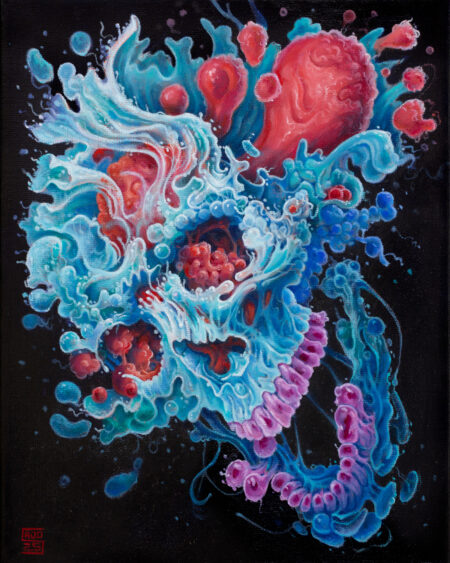










































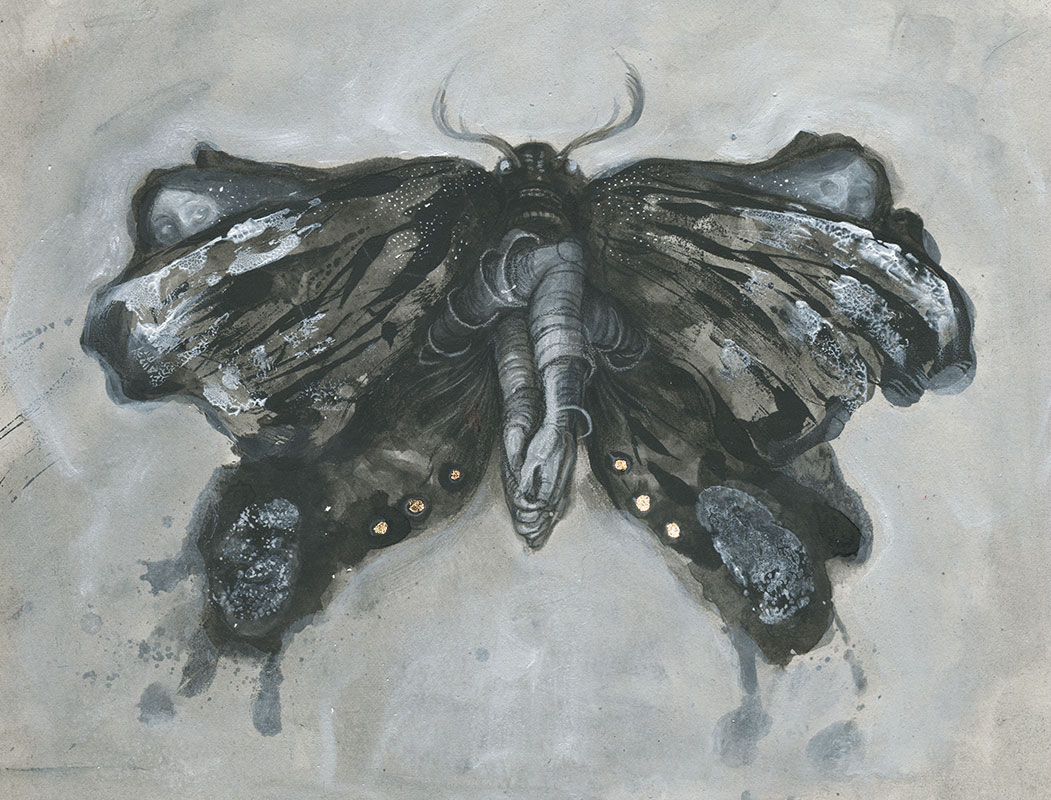

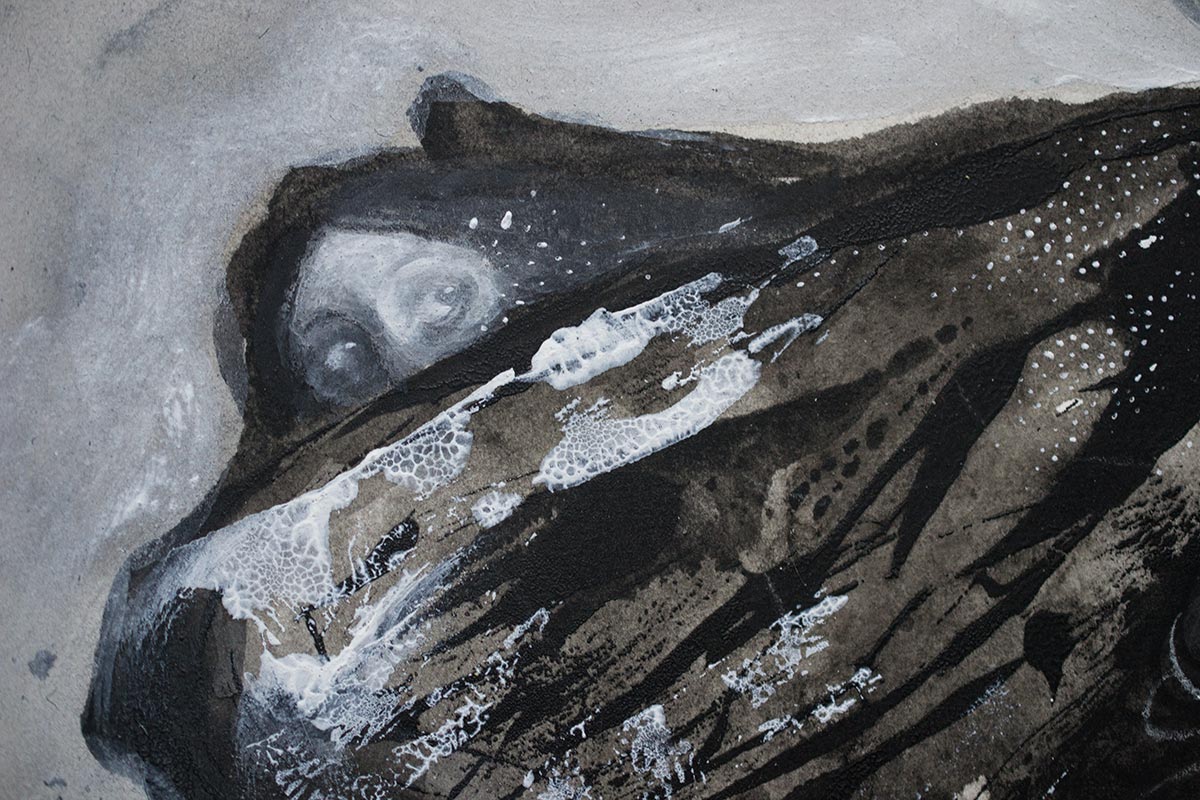
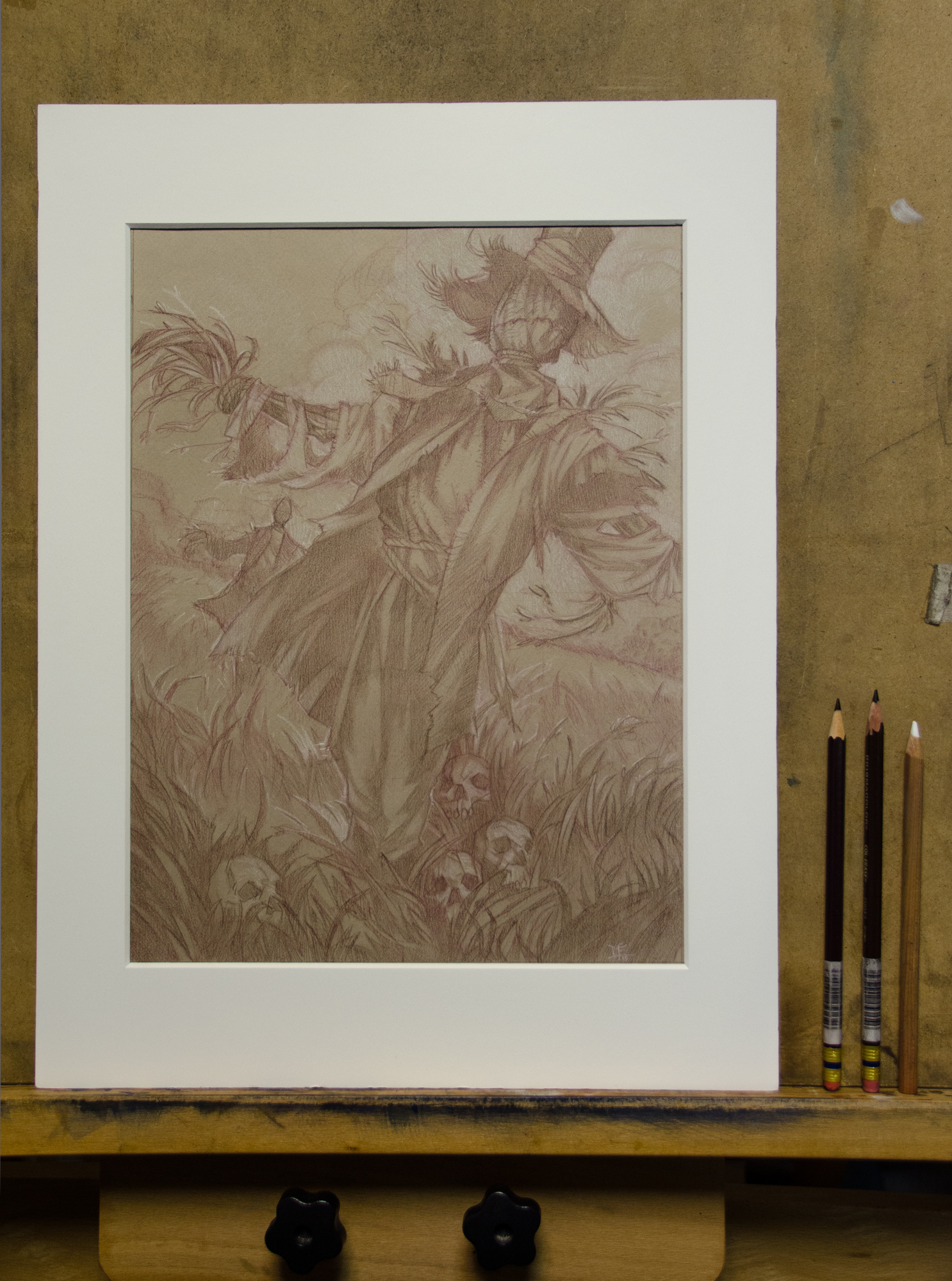
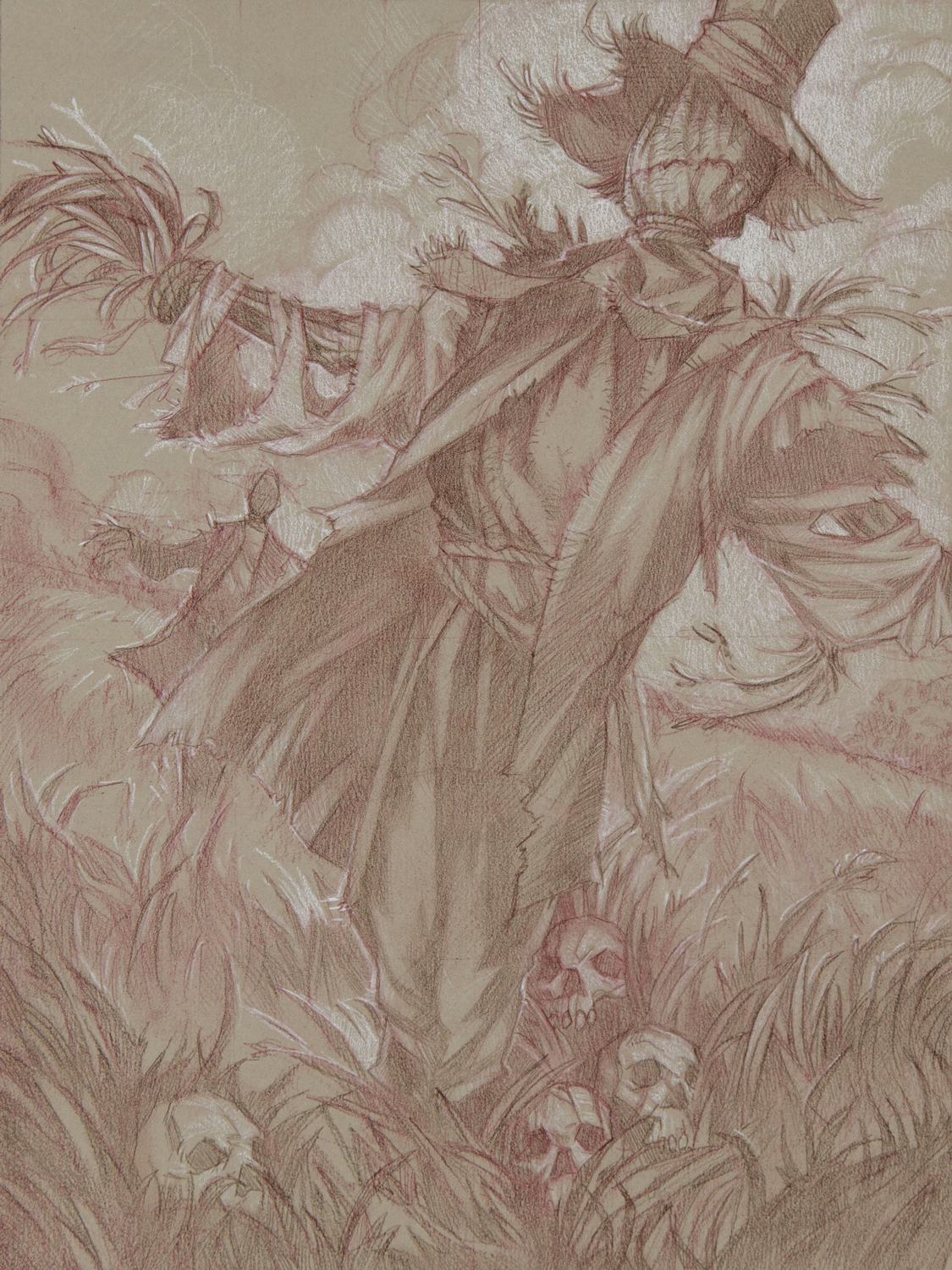
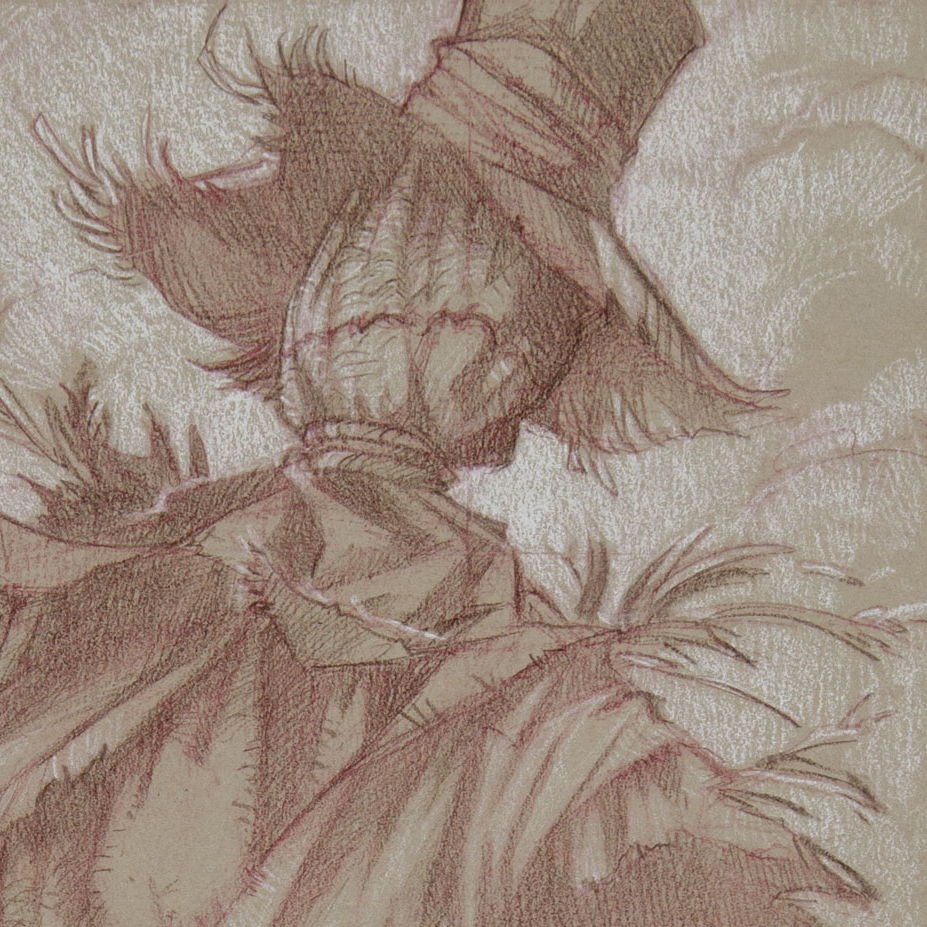


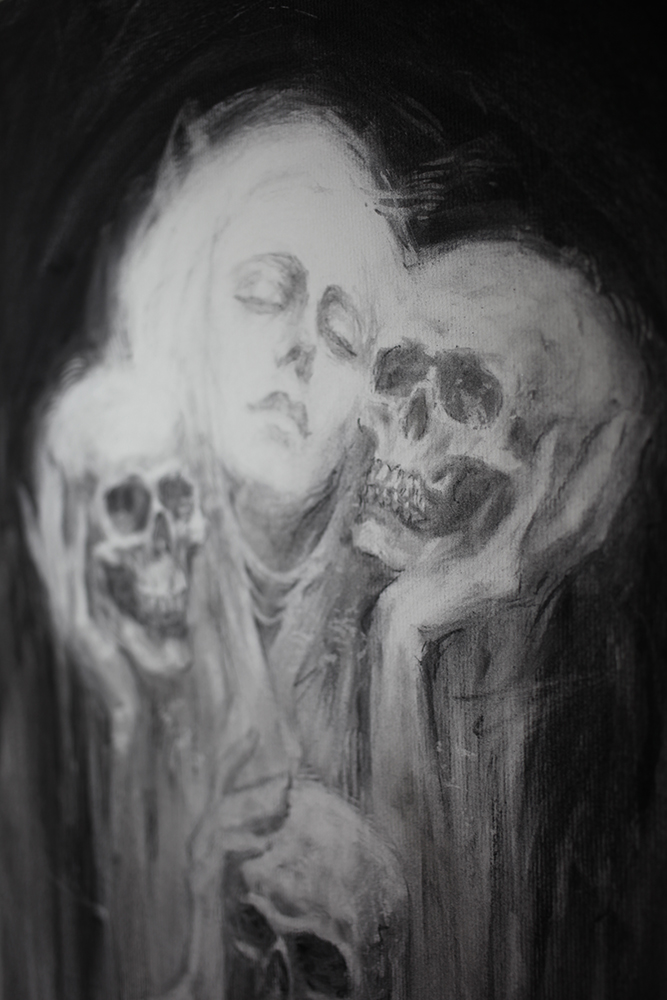


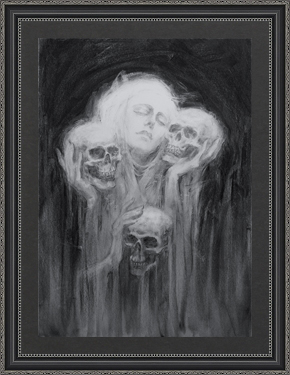
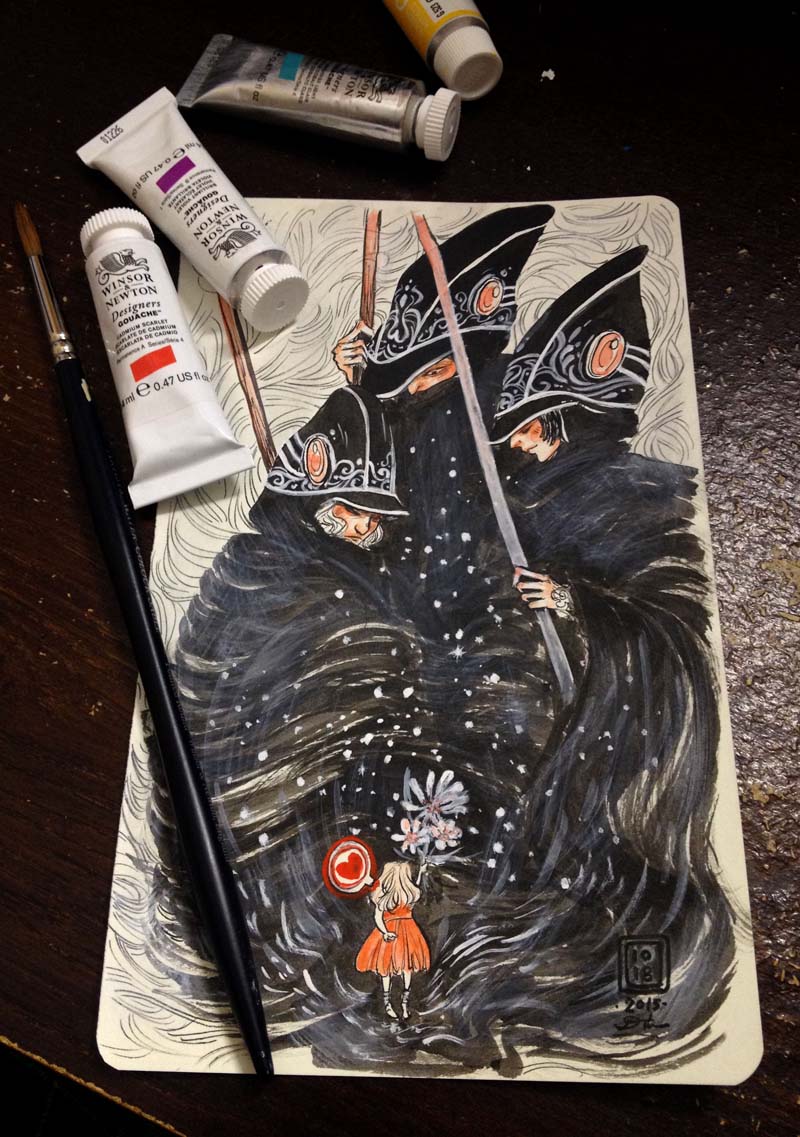


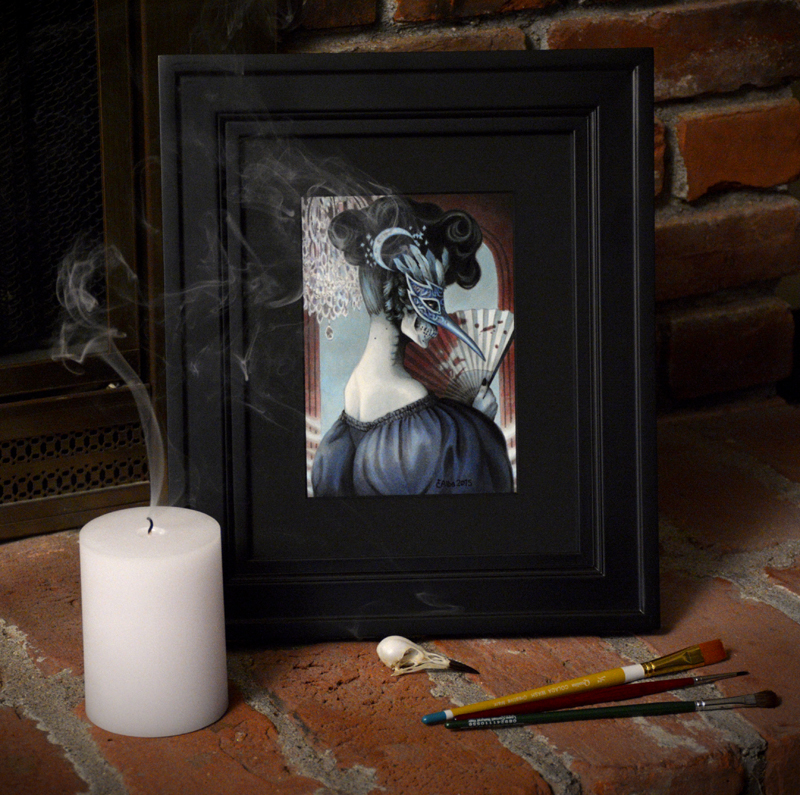
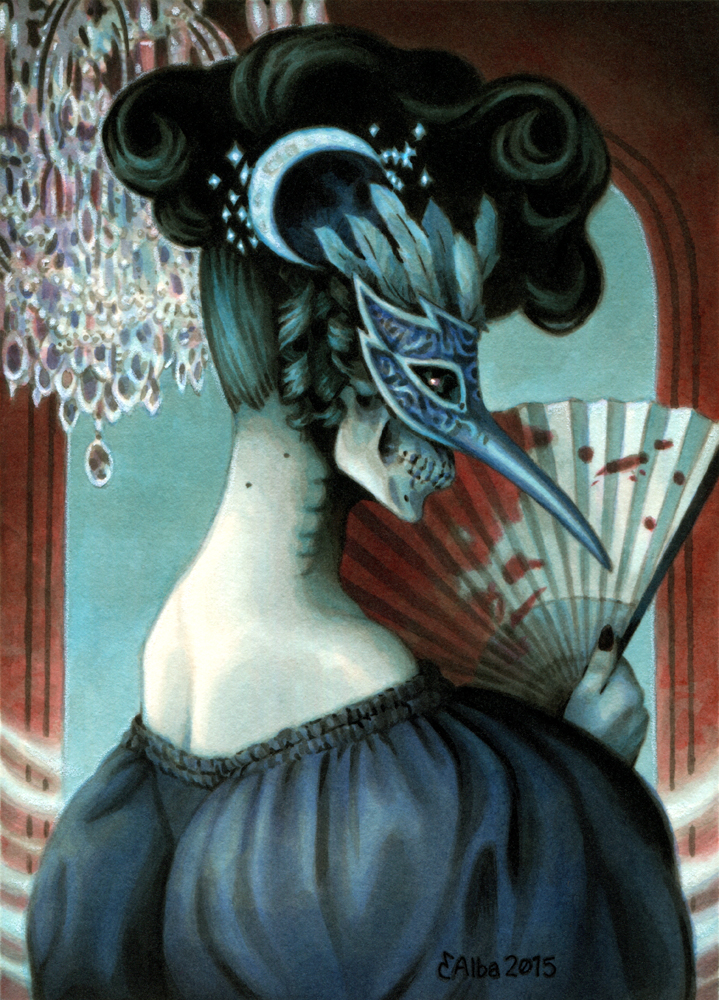

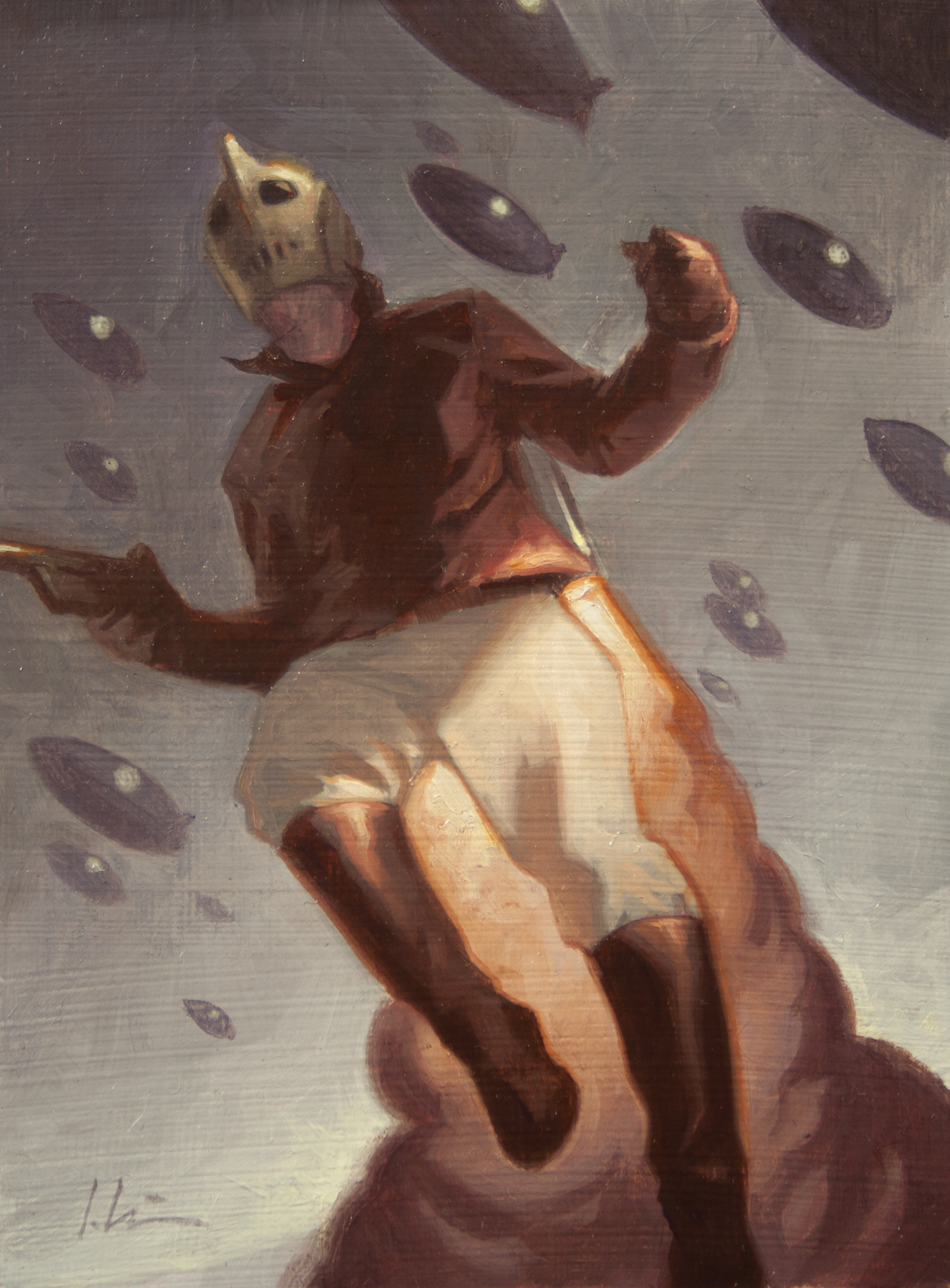

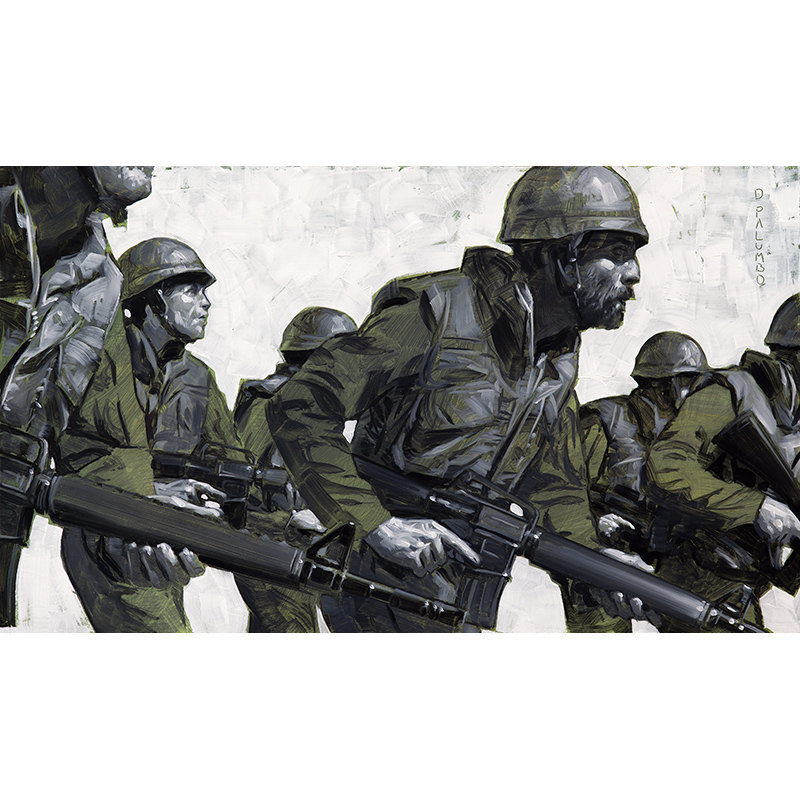
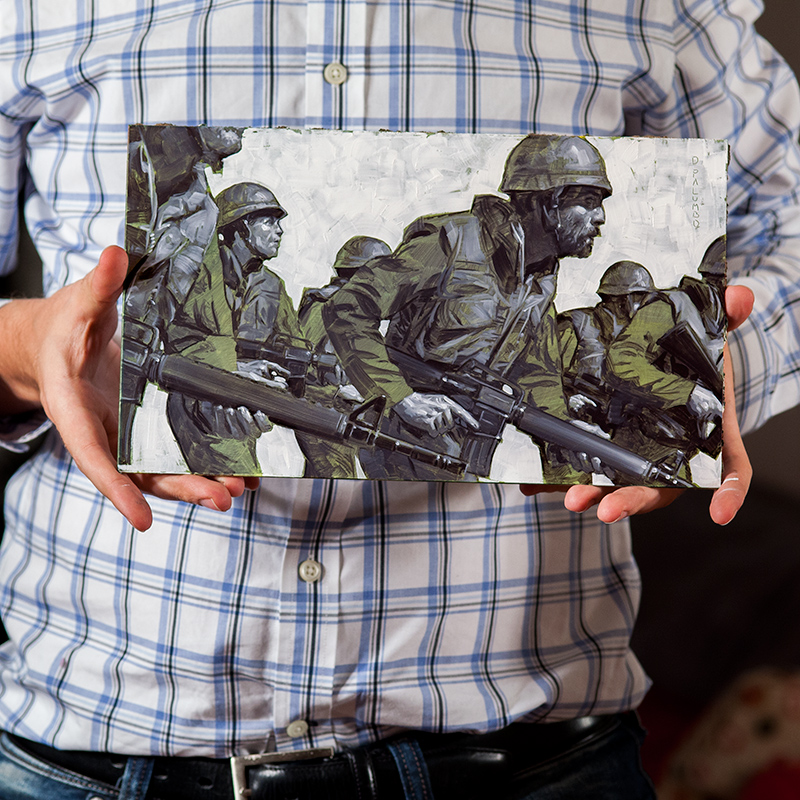
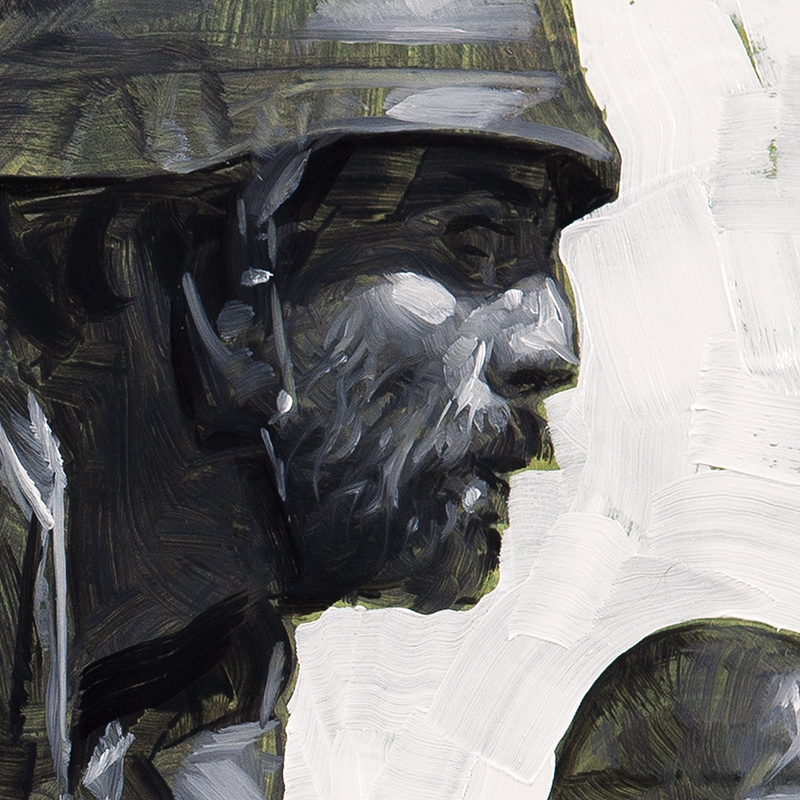

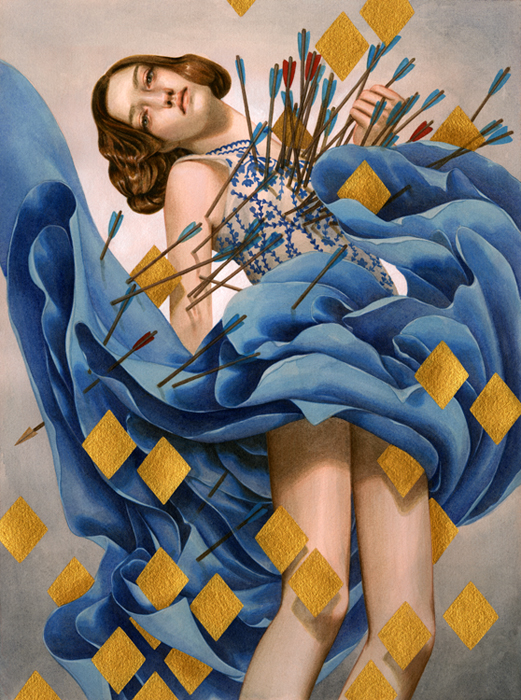 3. If I recall correctly, you were initially a very polite “no” to the invite to Every Day Original. What was your hesitation? What changed your mind?
3. If I recall correctly, you were initially a very polite “no” to the invite to Every Day Original. What was your hesitation? What changed your mind?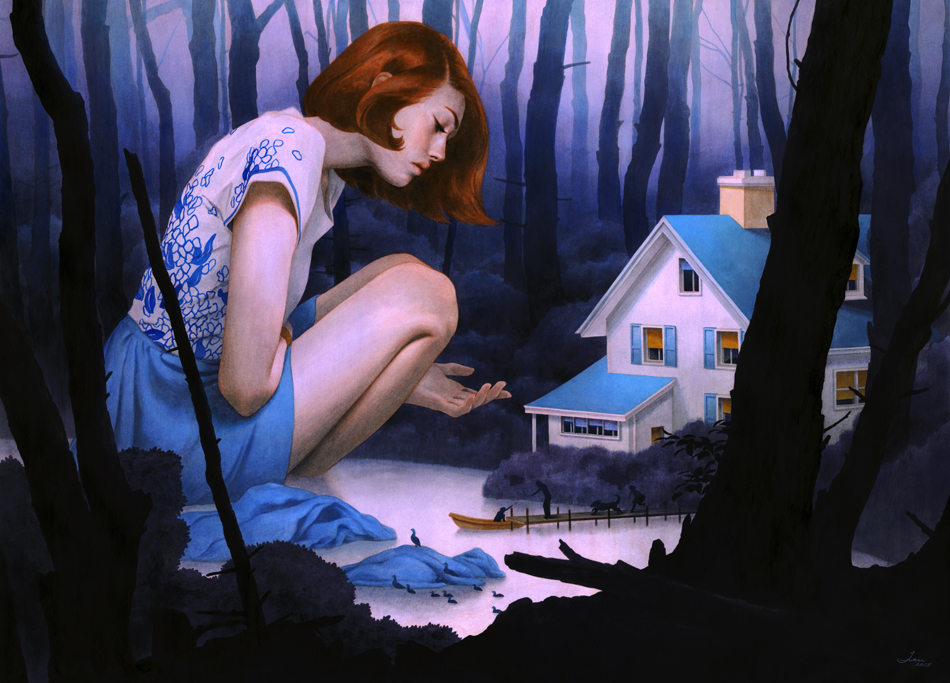
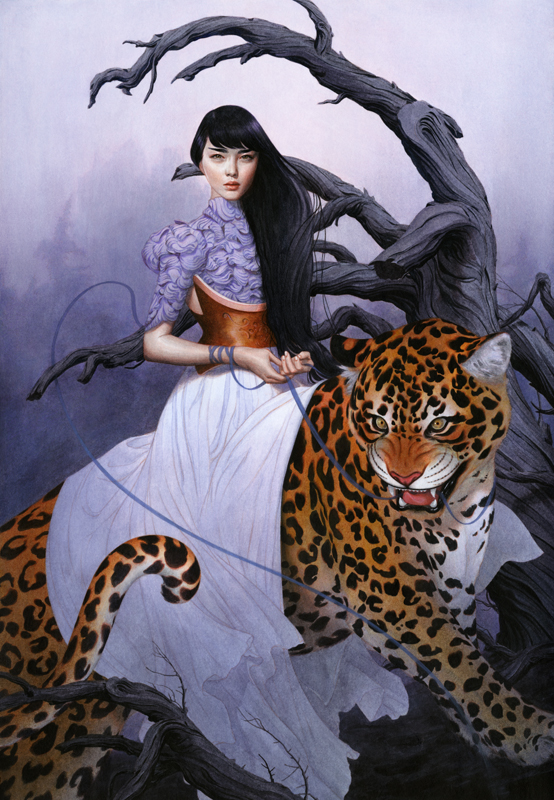 10. Is using color something that comes naturally to you, or something you struggled and worked up to?
10. Is using color something that comes naturally to you, or something you struggled and worked up to?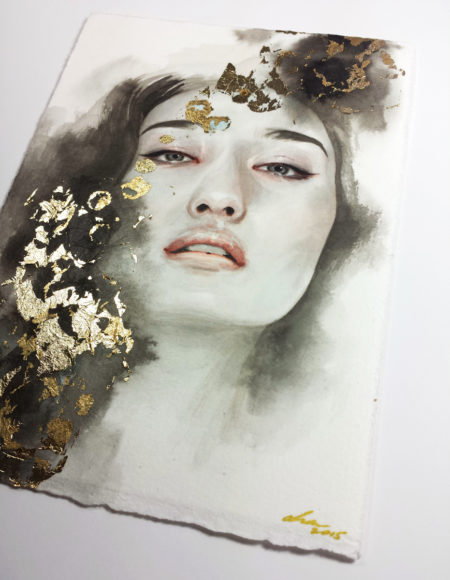
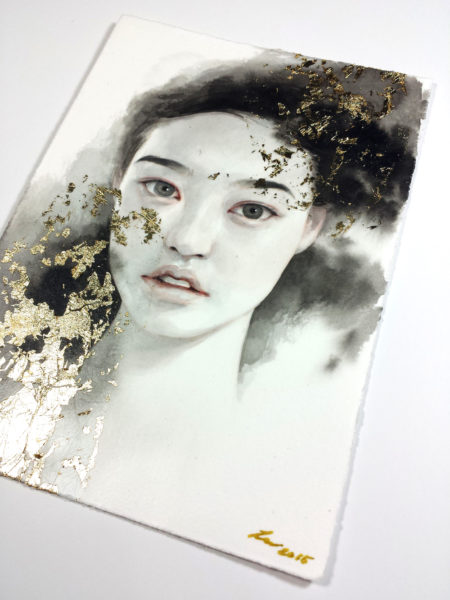

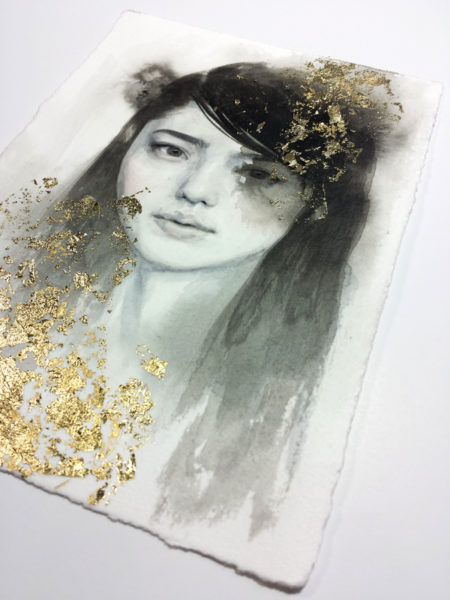
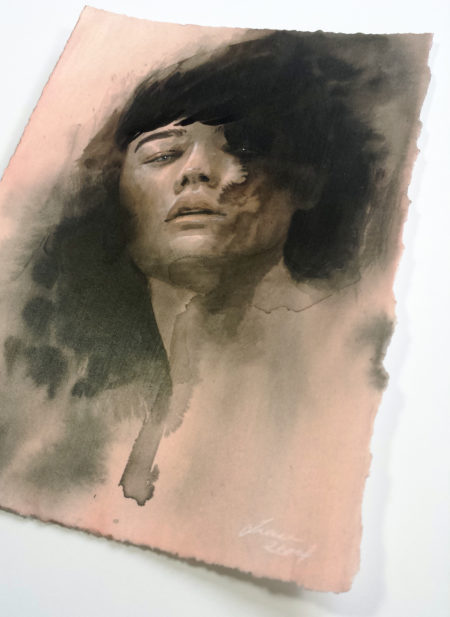
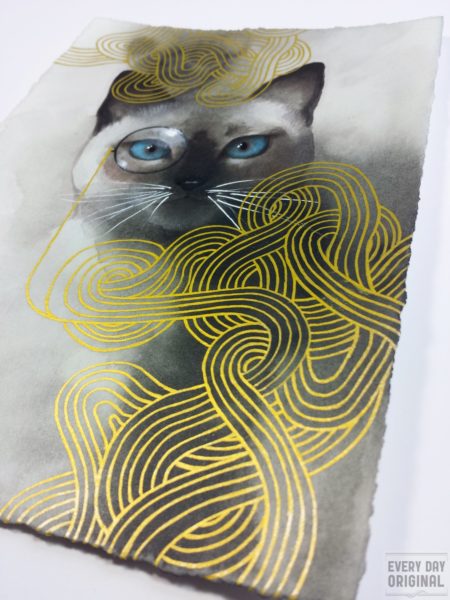
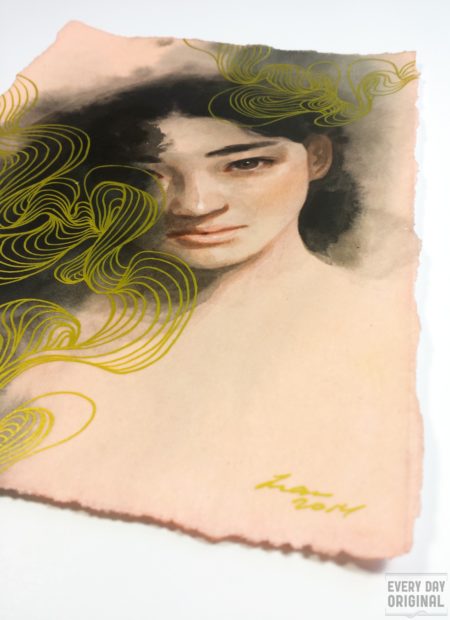
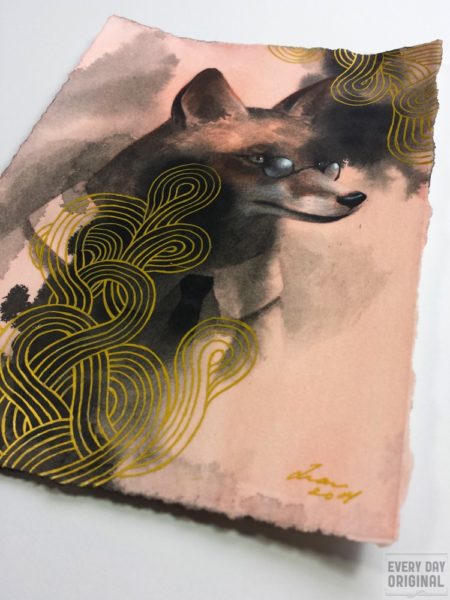
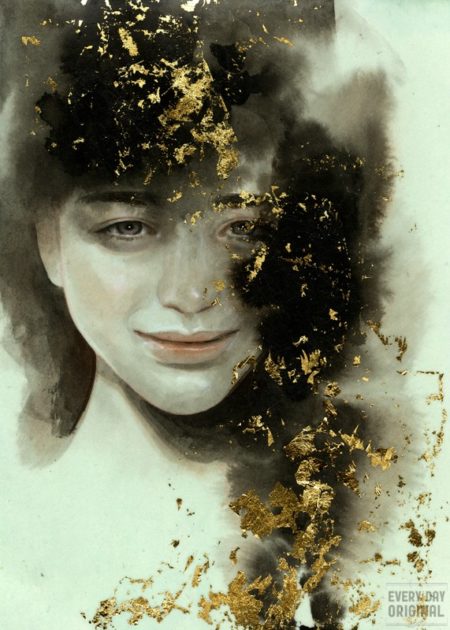
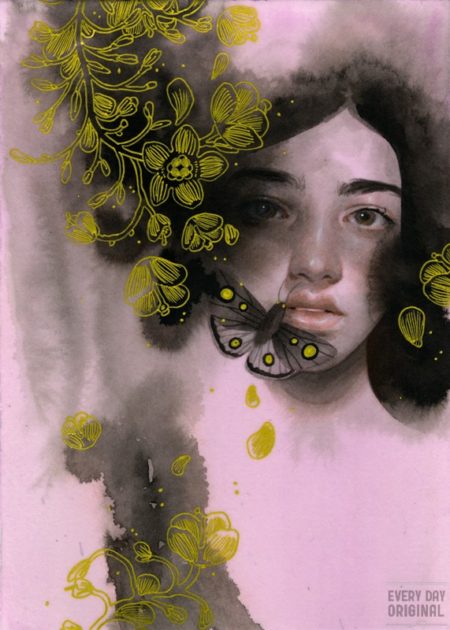


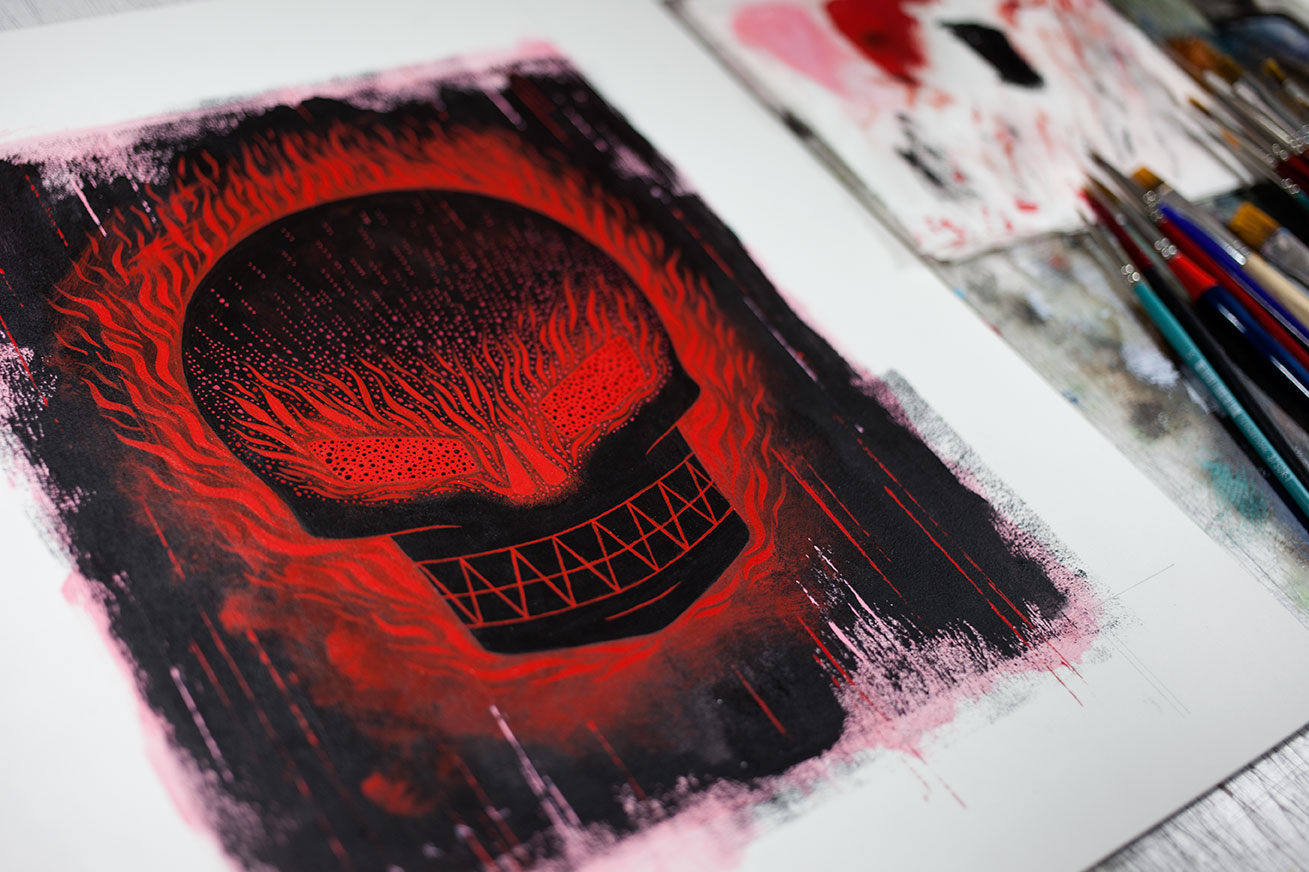


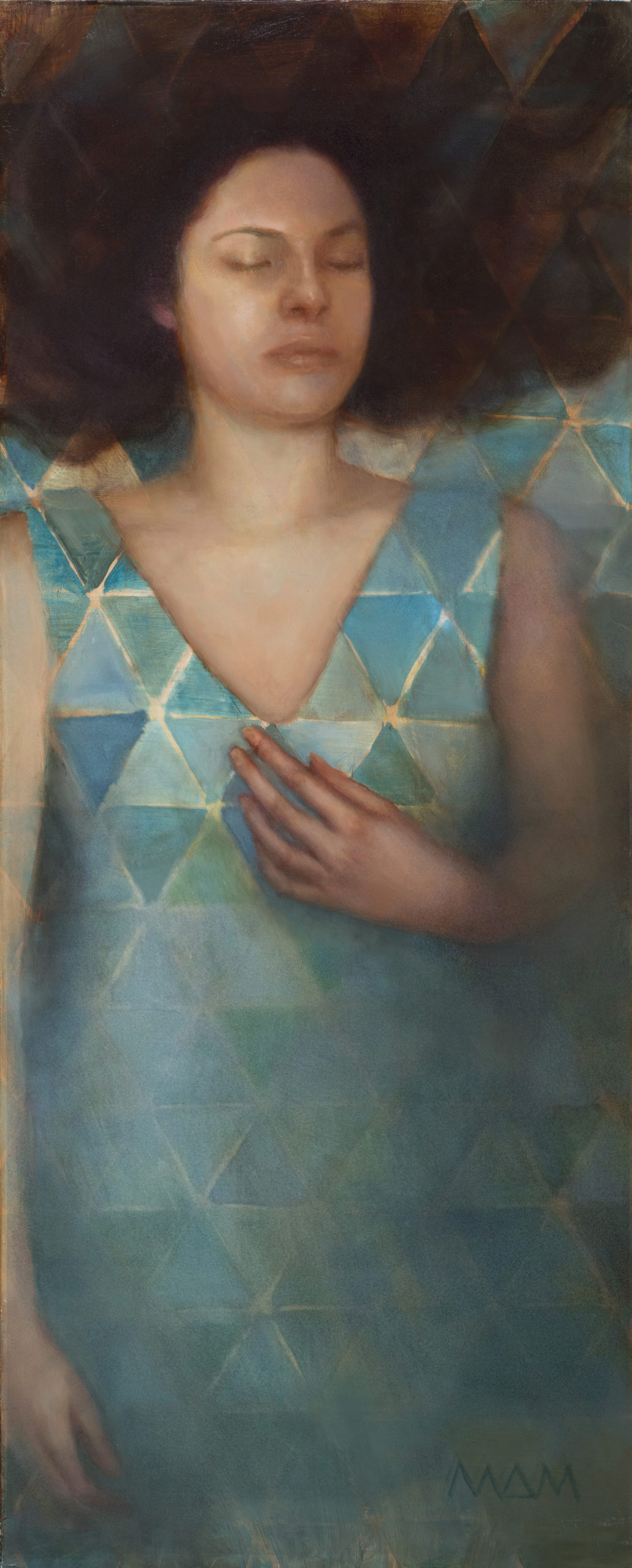
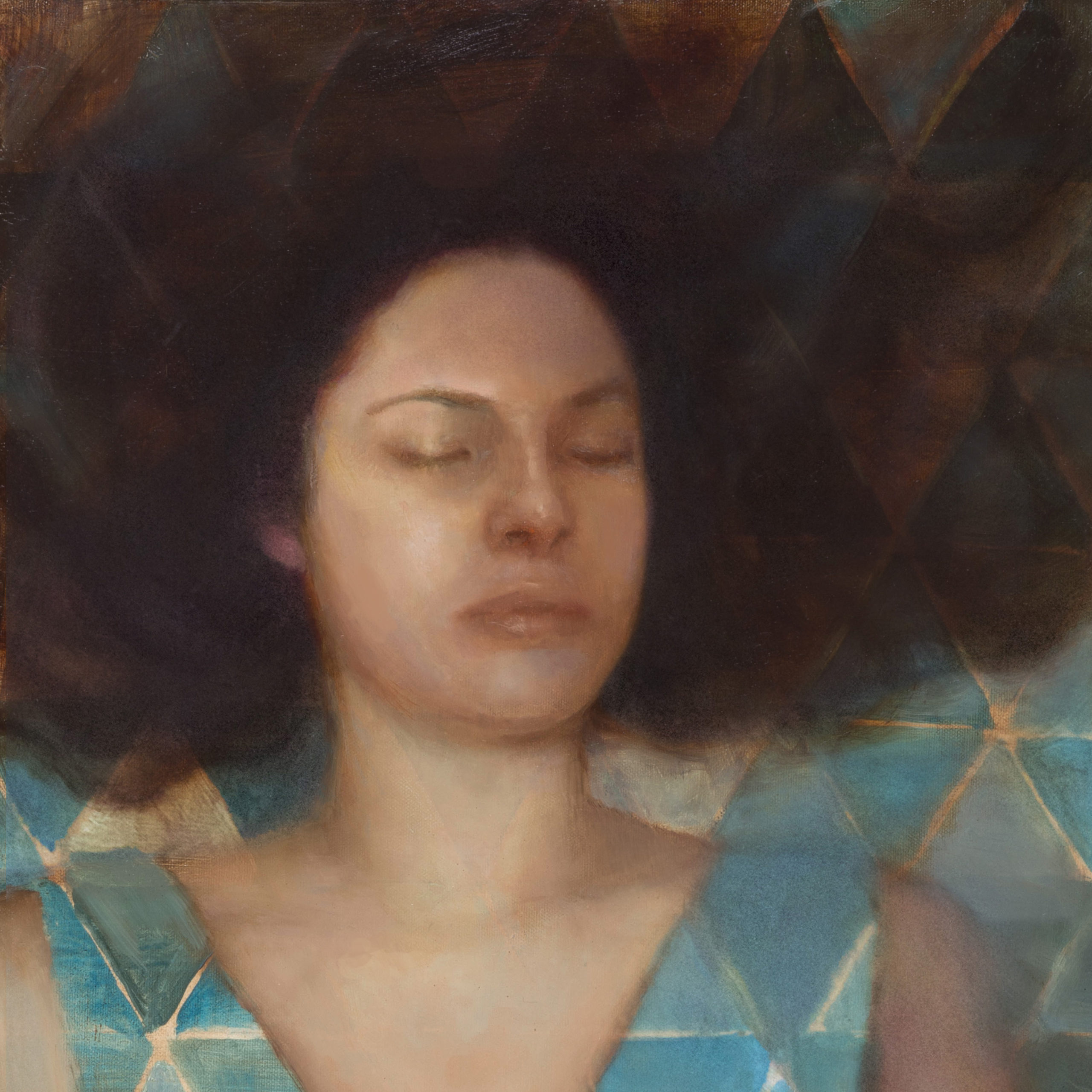


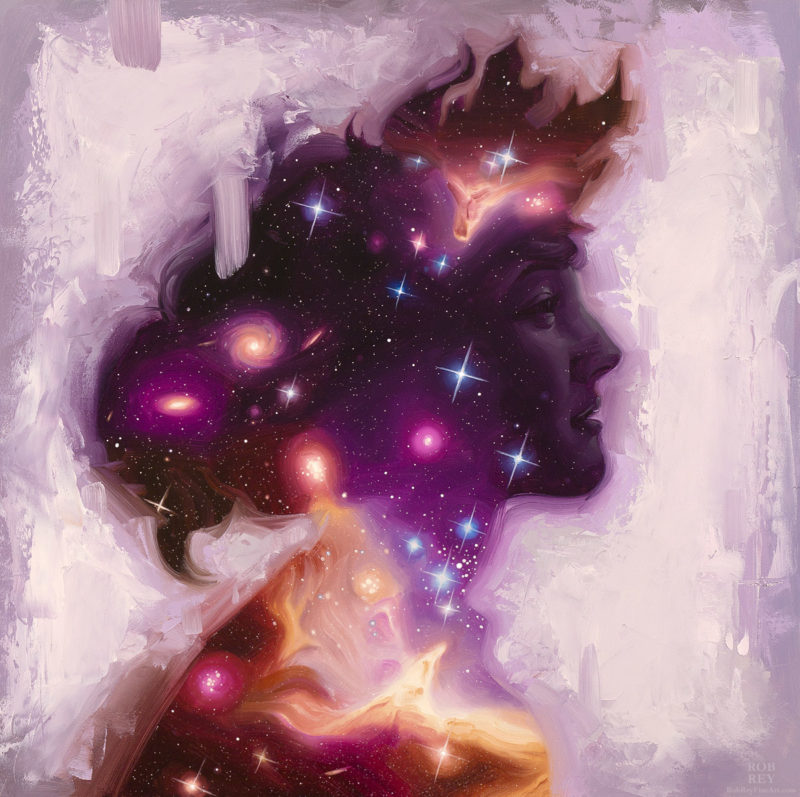 4. Jane McGonigal, noted game/social scientist/researcher/designer, in
4. Jane McGonigal, noted game/social scientist/researcher/designer, in 
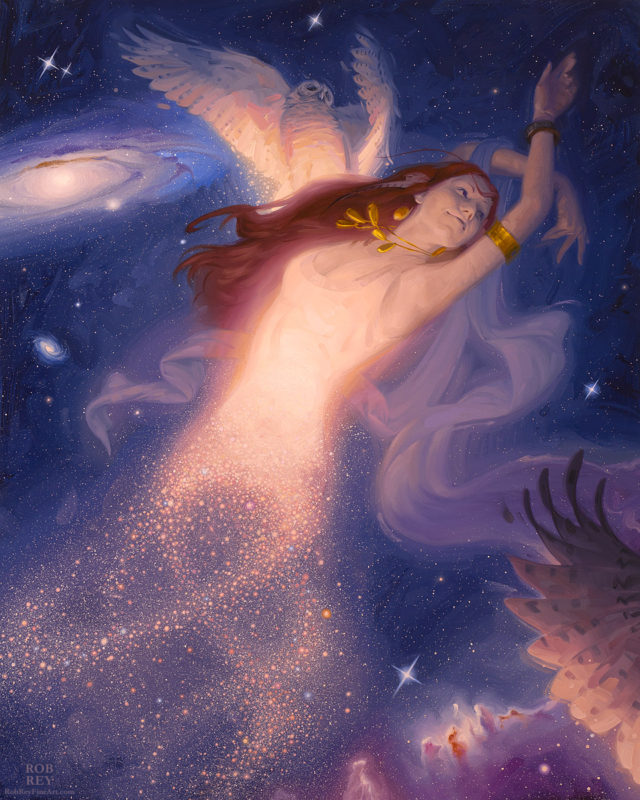 12. You have an incredible work ethic. There’s this romanticized idea of the fine artist/illustrator working around the clock year-round eschewing social contact and just creating creating creating. However, there’s plenty of research showing the important of breaks, even short ones to move around, go for a walk, see the sun. What’s a typical work day for you? What kinds of things do you do to rest the mind and brushes?
12. You have an incredible work ethic. There’s this romanticized idea of the fine artist/illustrator working around the clock year-round eschewing social contact and just creating creating creating. However, there’s plenty of research showing the important of breaks, even short ones to move around, go for a walk, see the sun. What’s a typical work day for you? What kinds of things do you do to rest the mind and brushes?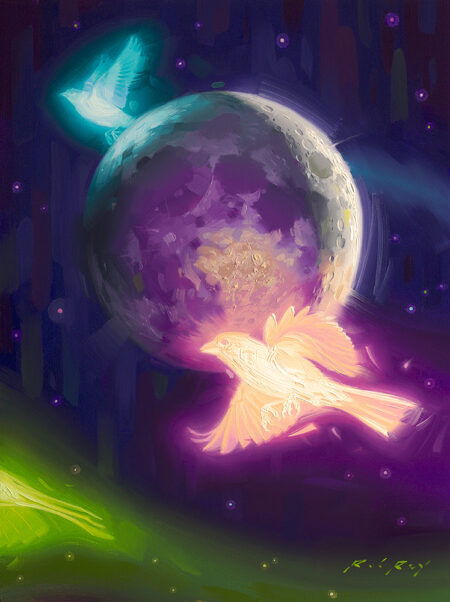

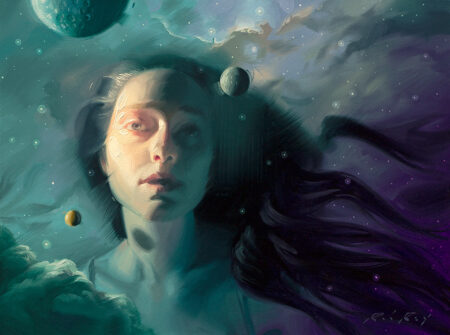
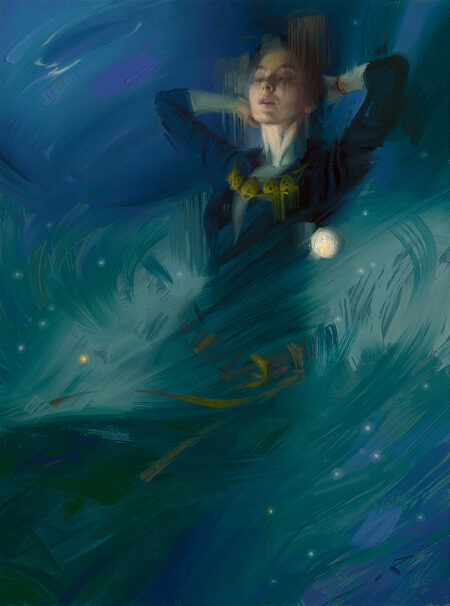
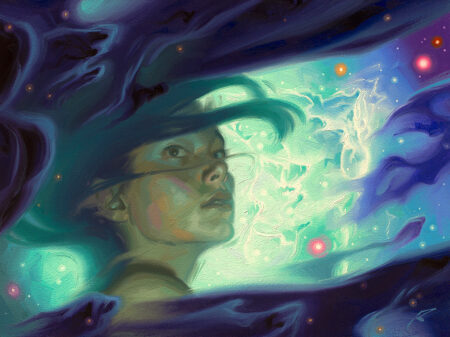
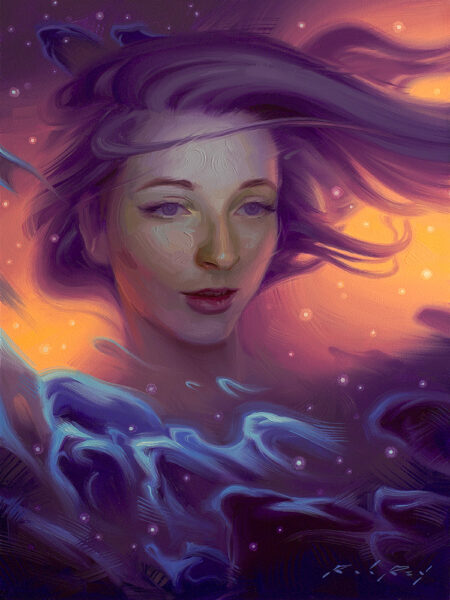
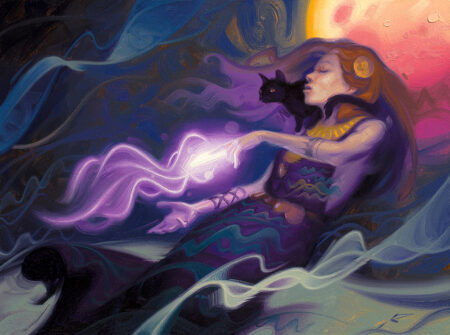



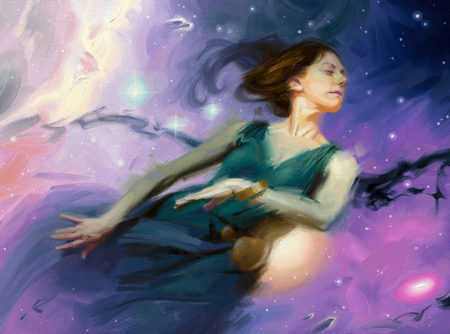
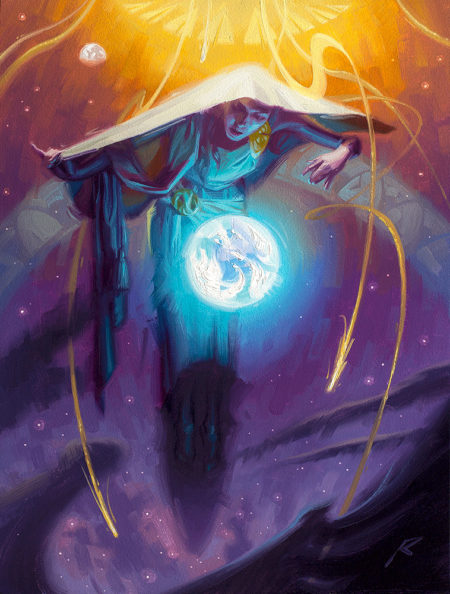

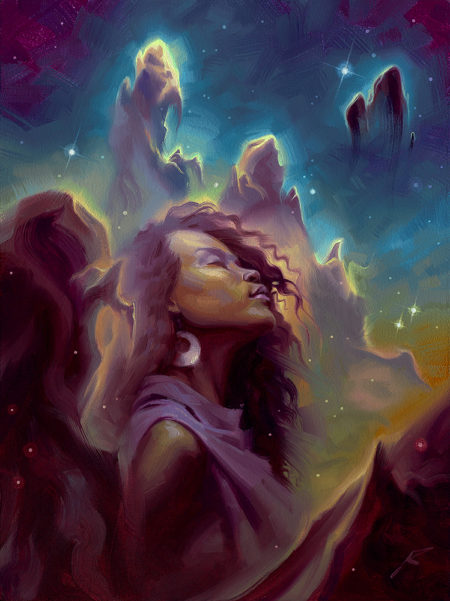
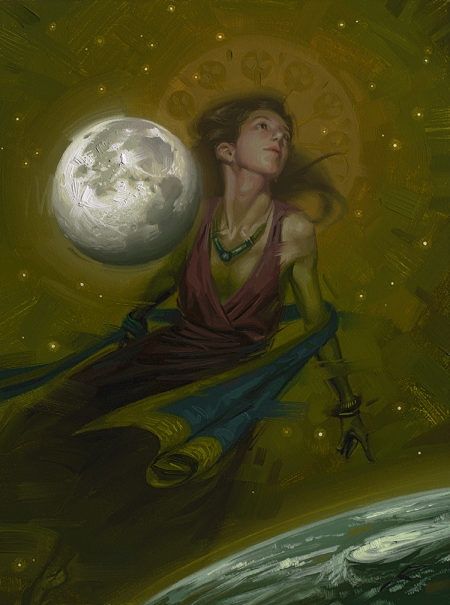

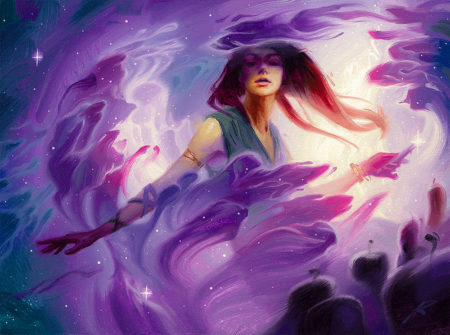


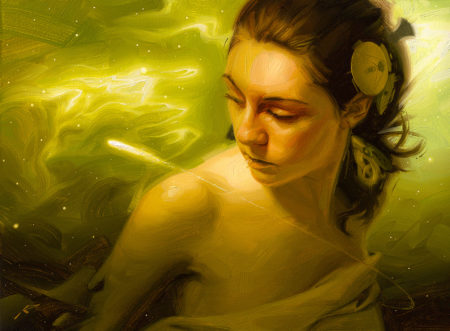
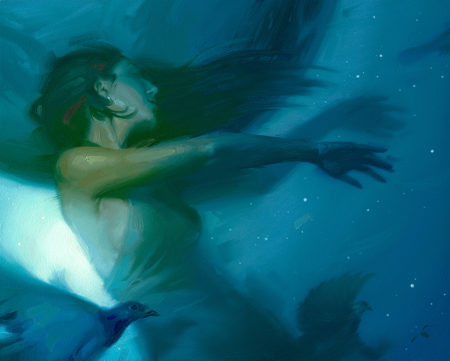
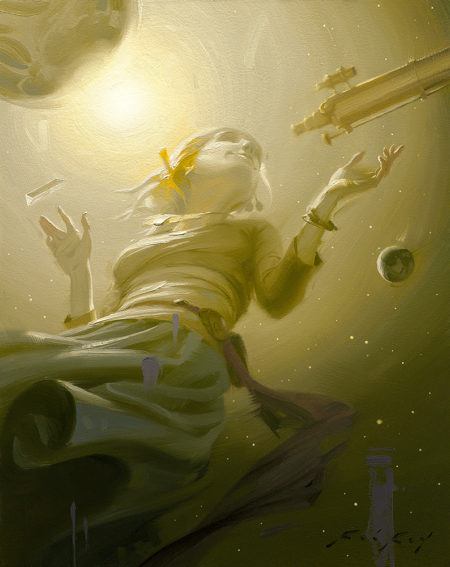
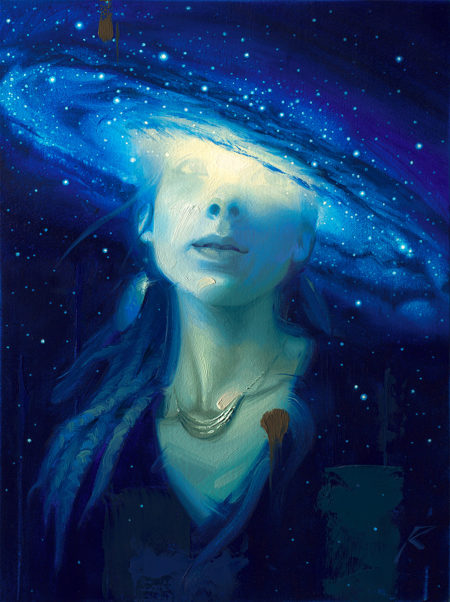
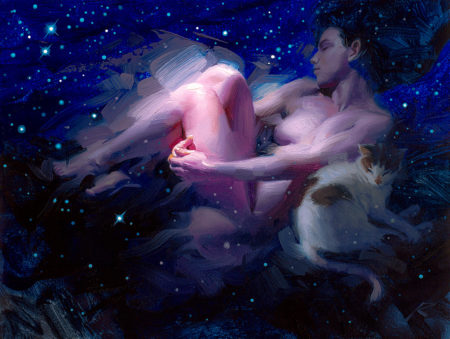
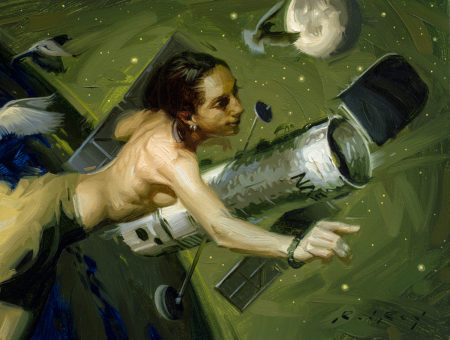


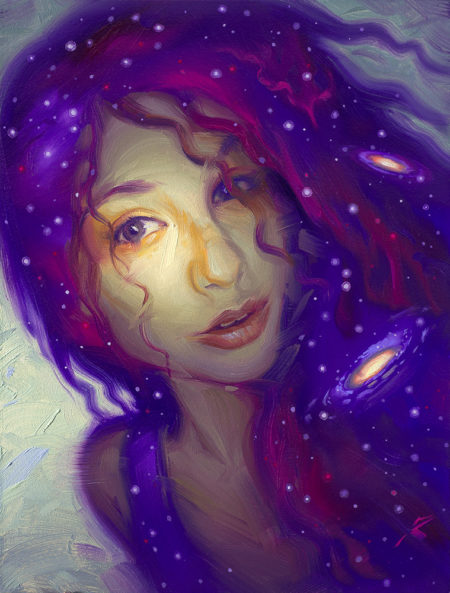
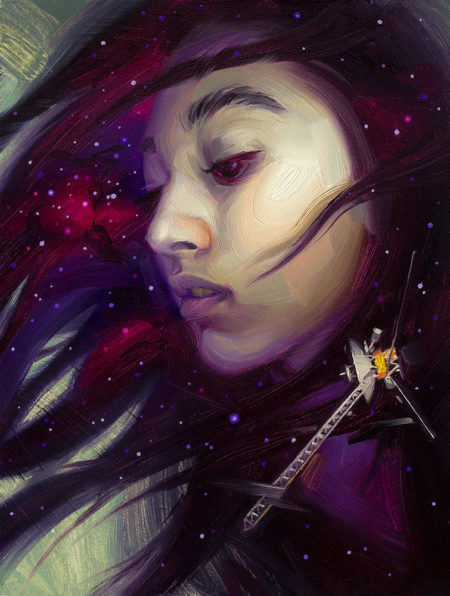
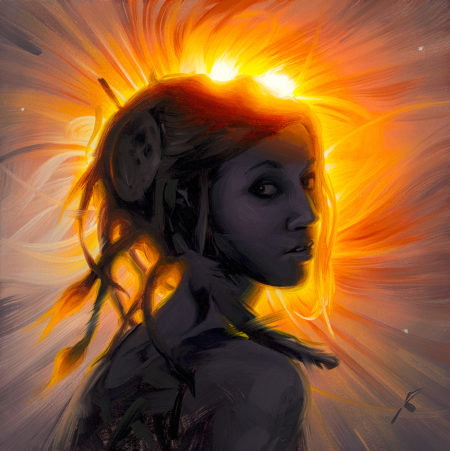

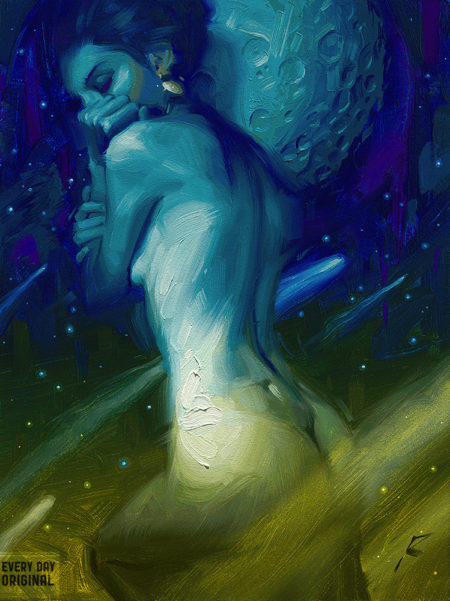
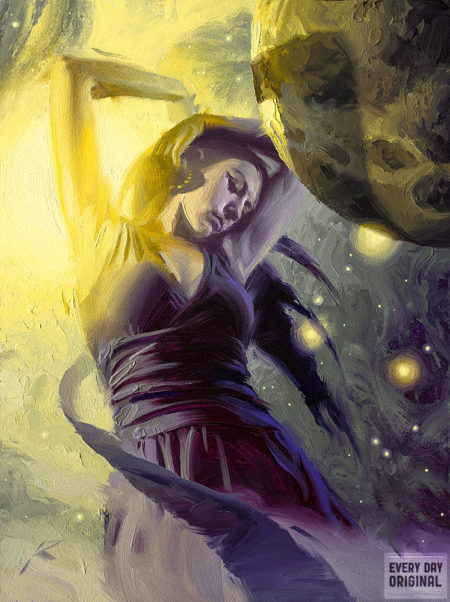

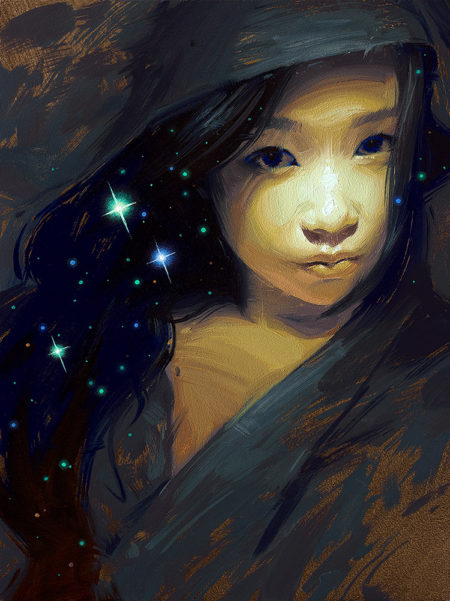
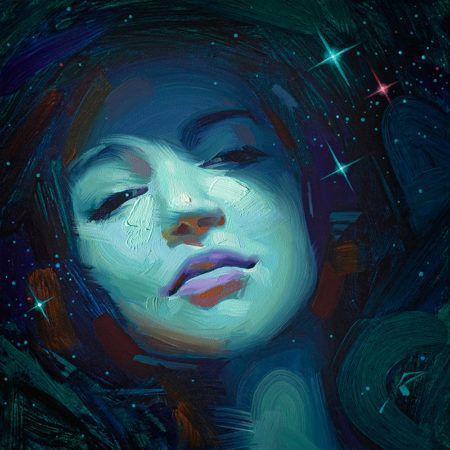

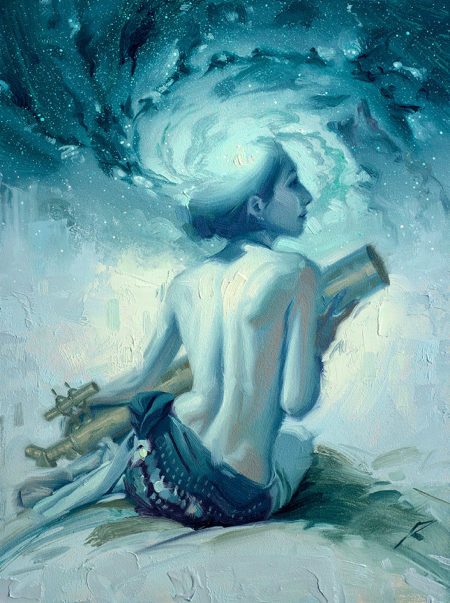
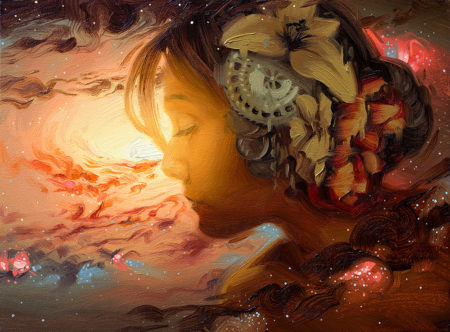
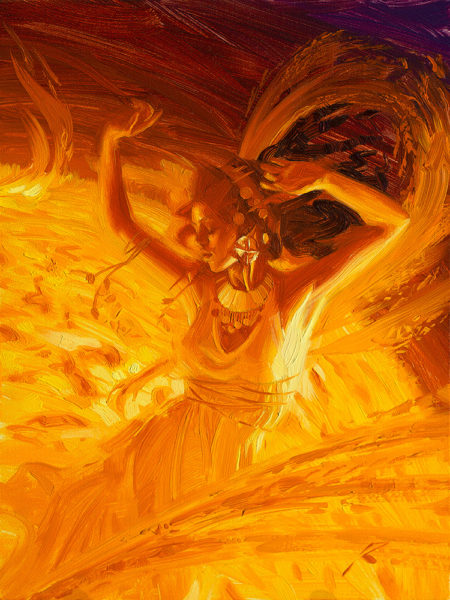
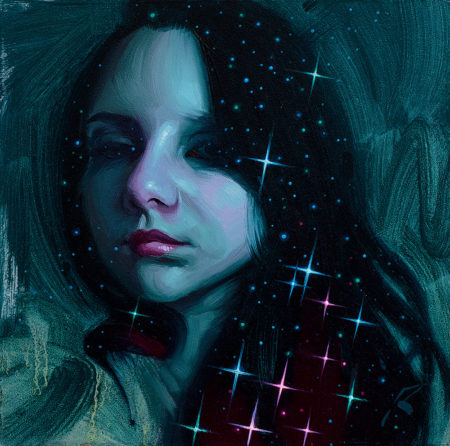



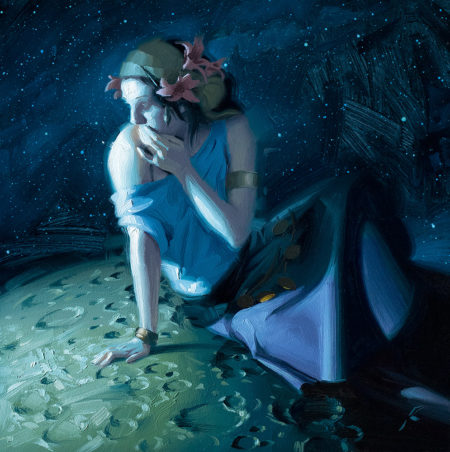
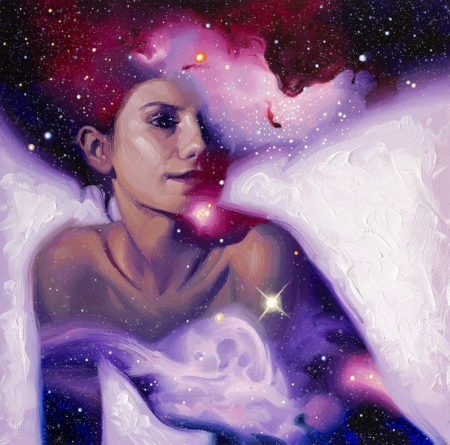
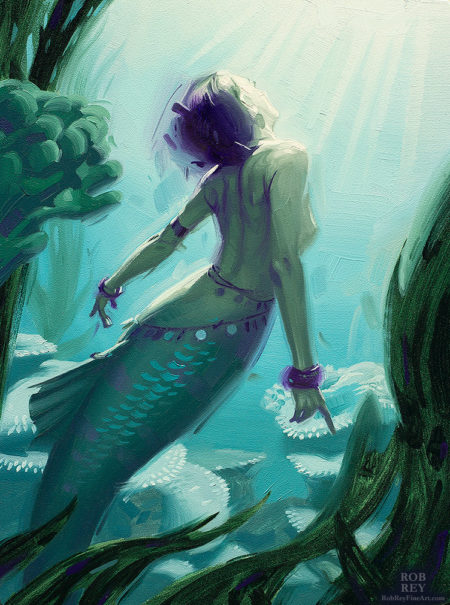
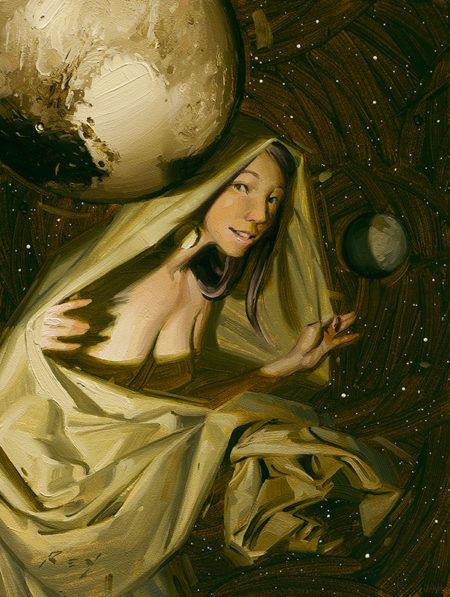
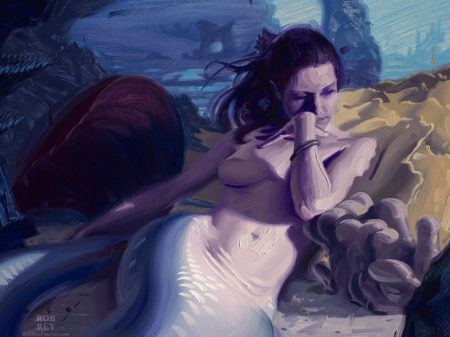
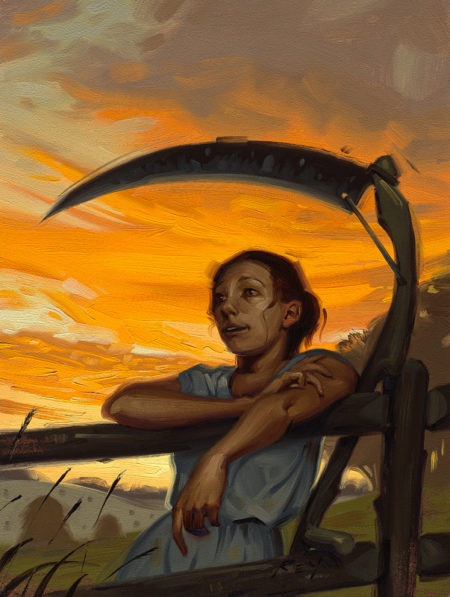
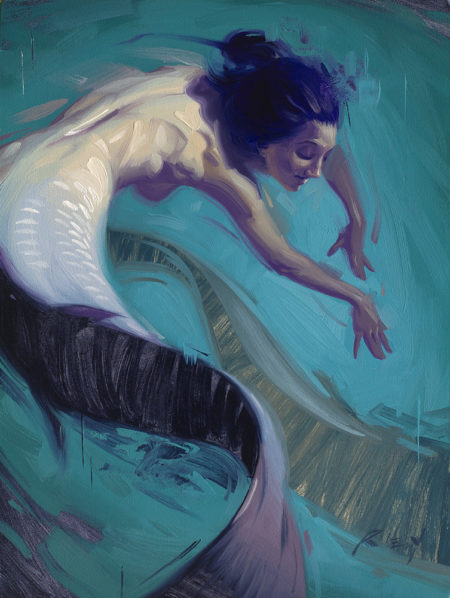

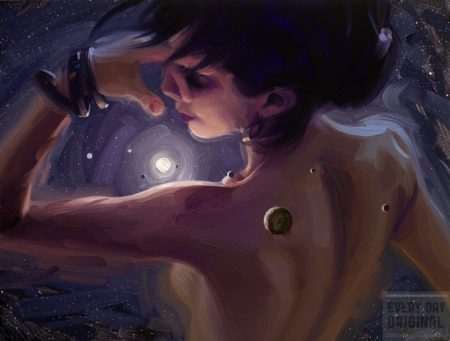
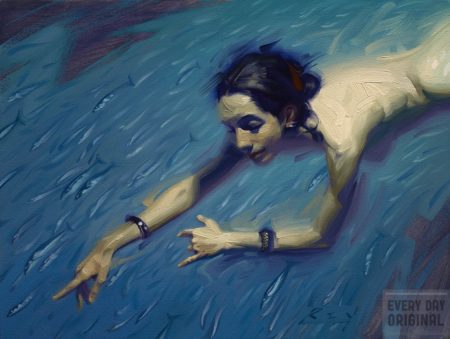
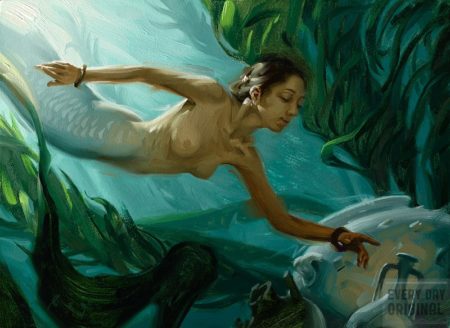
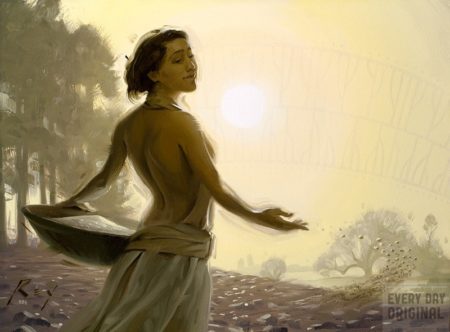
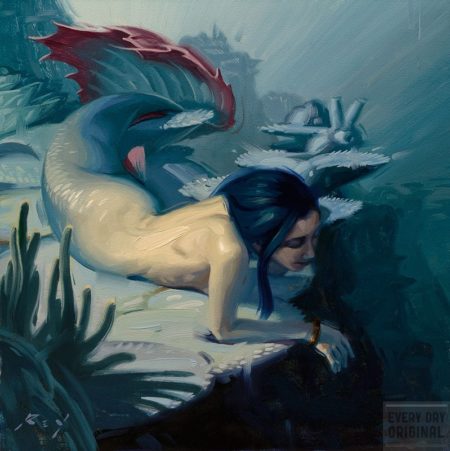
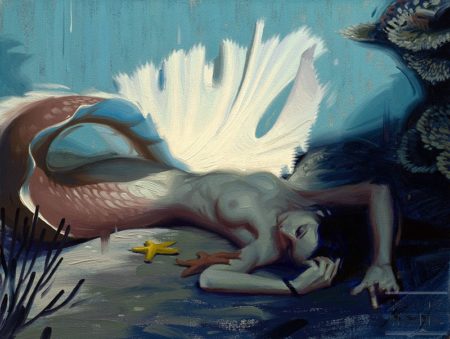
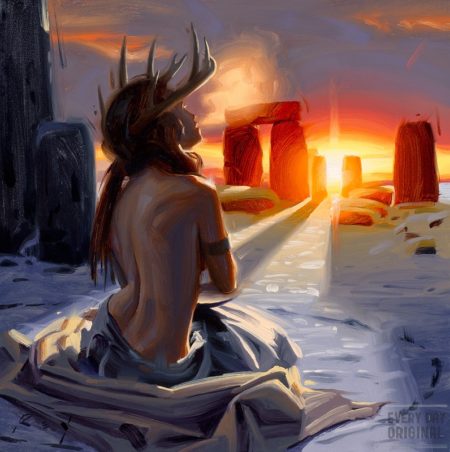
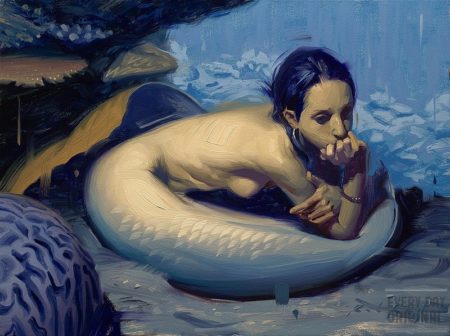


 3. You are making a transition now from gallery work to illustration. Is it correct to call it a transition or are you simply expanding? Tell us why the move and/or expansion?
3. You are making a transition now from gallery work to illustration. Is it correct to call it a transition or are you simply expanding? Tell us why the move and/or expansion? 8. Rather than ask how you price your work, we would love to know how you budget your money and time. Do you have a goal salary and work to make enough work to fill that number? How do you approach the business of being an artist?
8. Rather than ask how you price your work, we would love to know how you budget your money and time. Do you have a goal salary and work to make enough work to fill that number? How do you approach the business of being an artist? 12. Your work focuses heavily on the female figure, often inside a narrow set of archetypes (visually and narratively). Is this a conscious decision to represent this specific type of woman, or do you just naturally favor this imagery in your paintings/illustrations? Is there a narrative you have about how you portray women?
12. Your work focuses heavily on the female figure, often inside a narrow set of archetypes (visually and narratively). Is this a conscious decision to represent this specific type of woman, or do you just naturally favor this imagery in your paintings/illustrations? Is there a narrative you have about how you portray women?